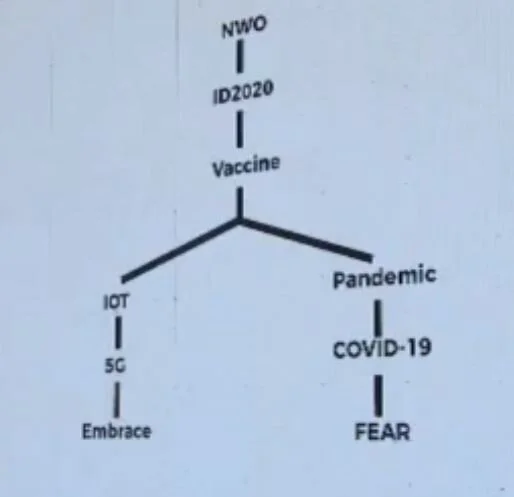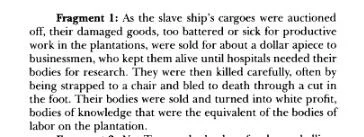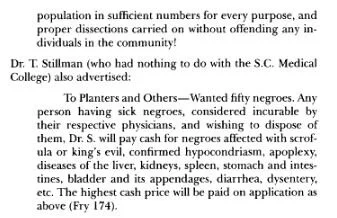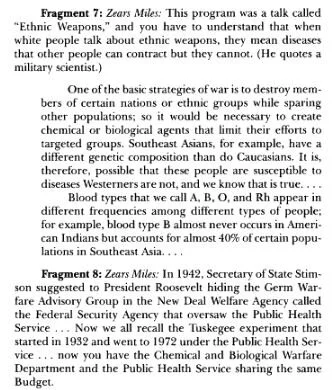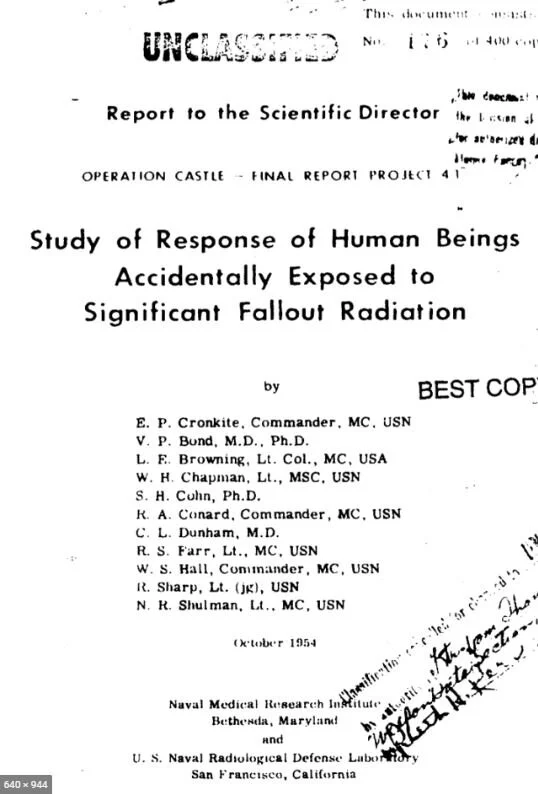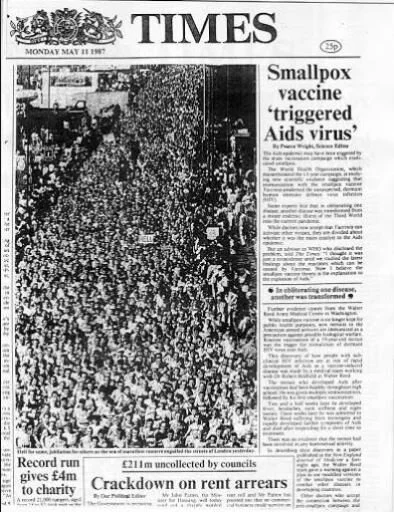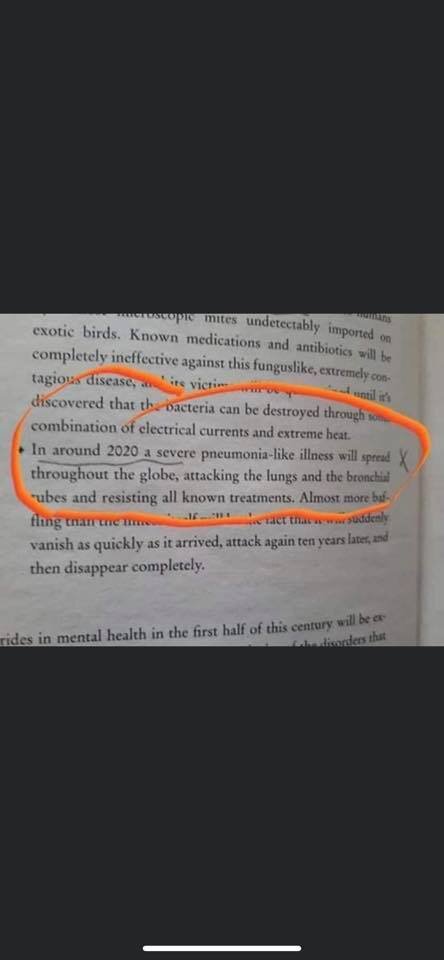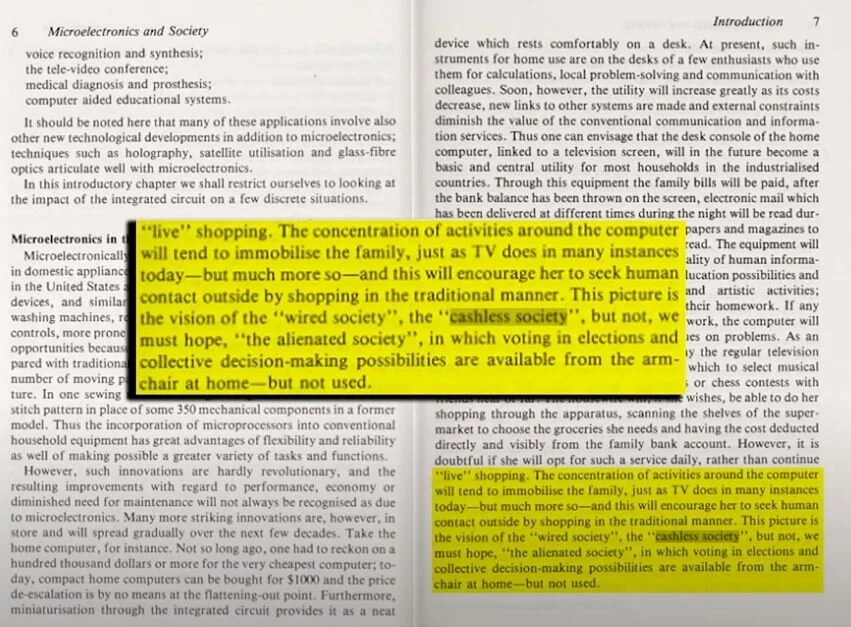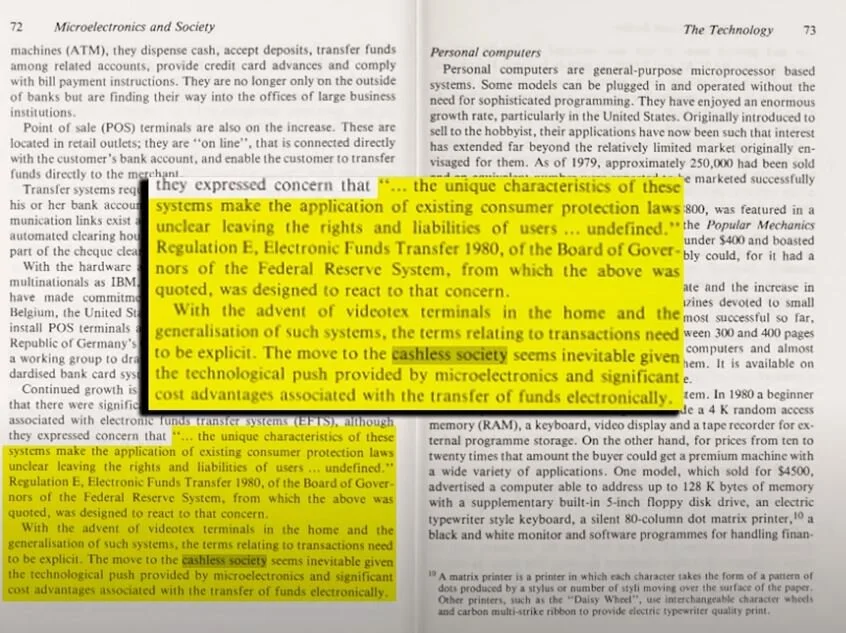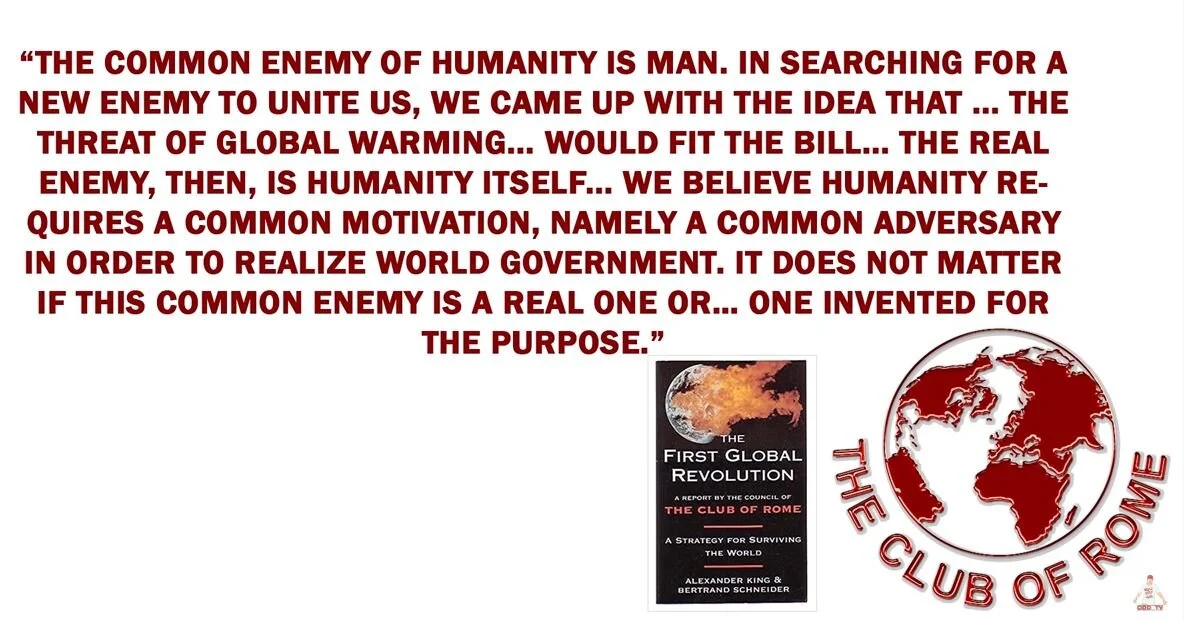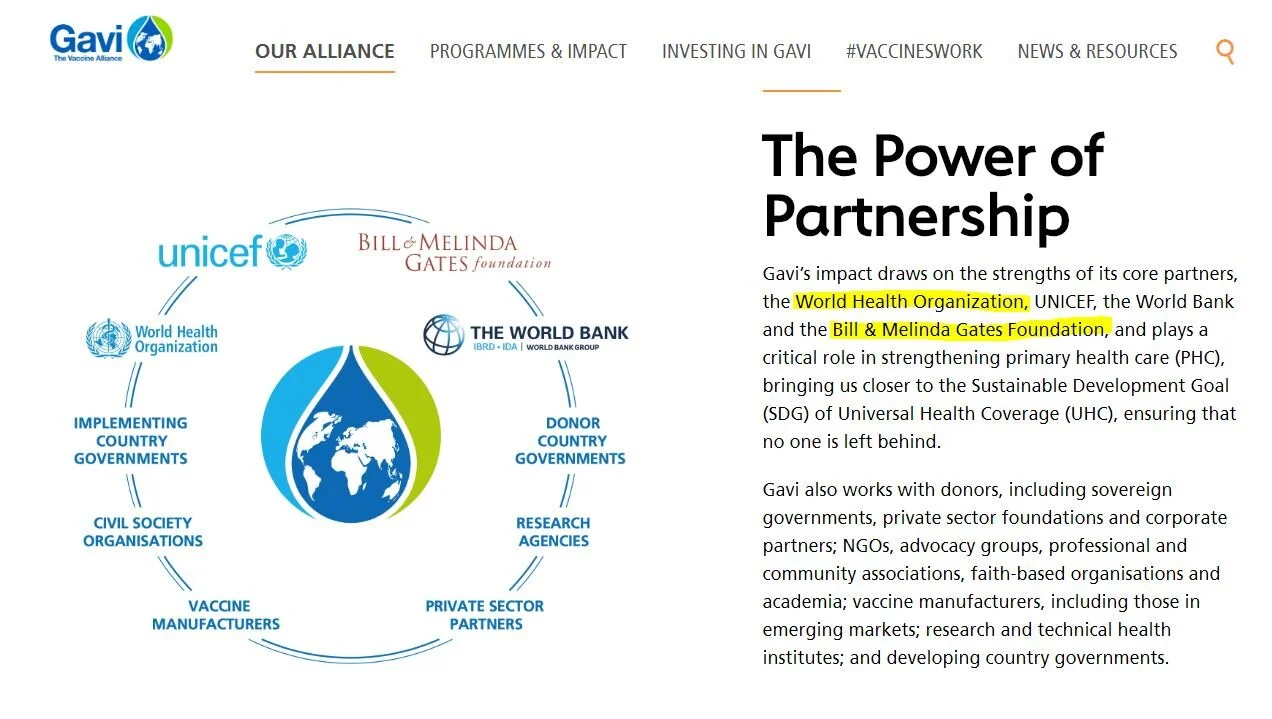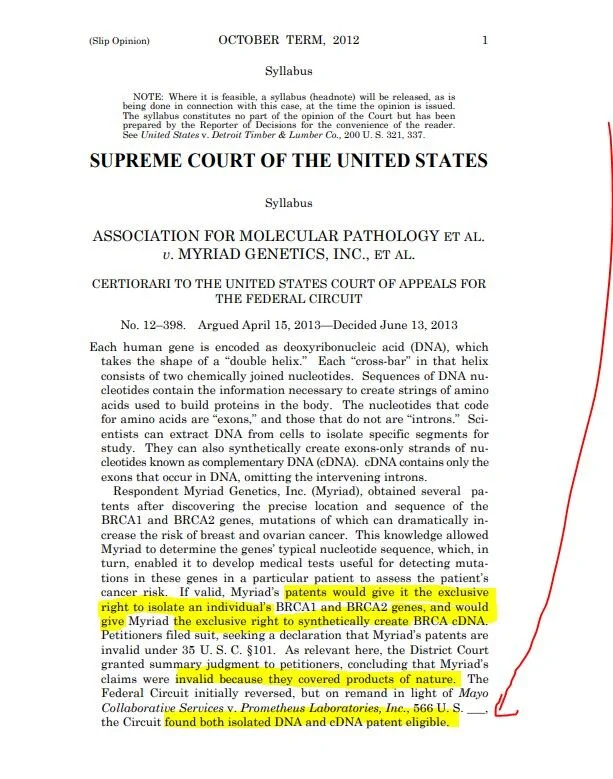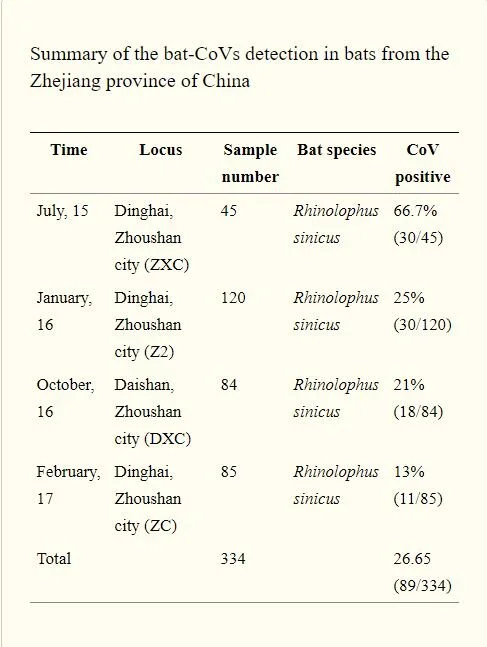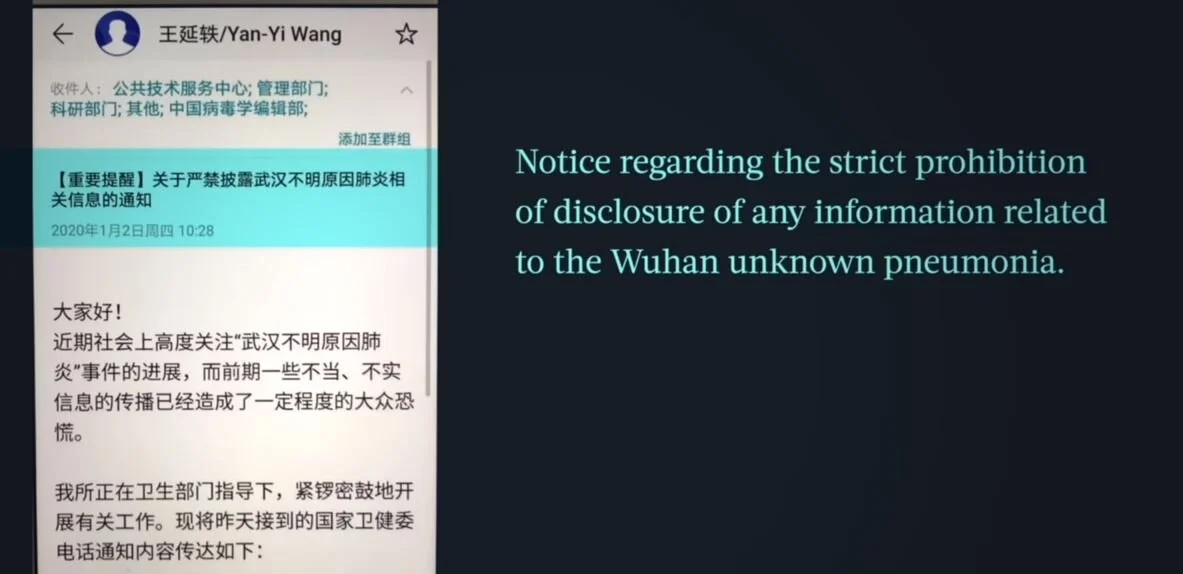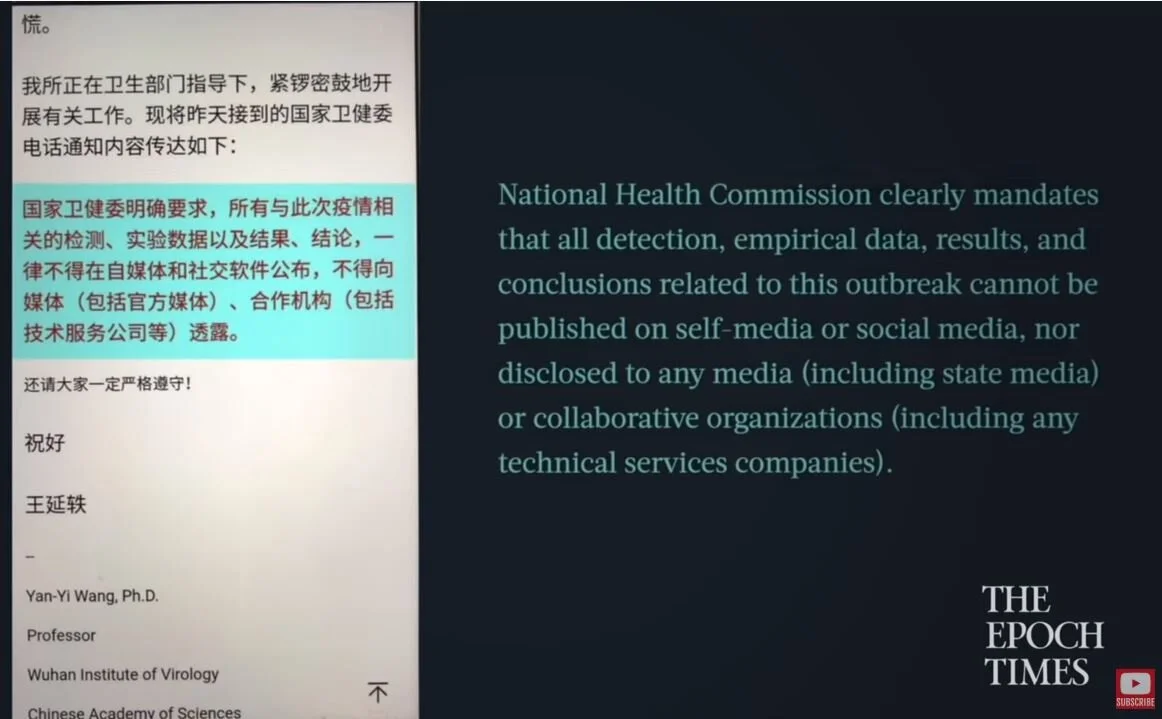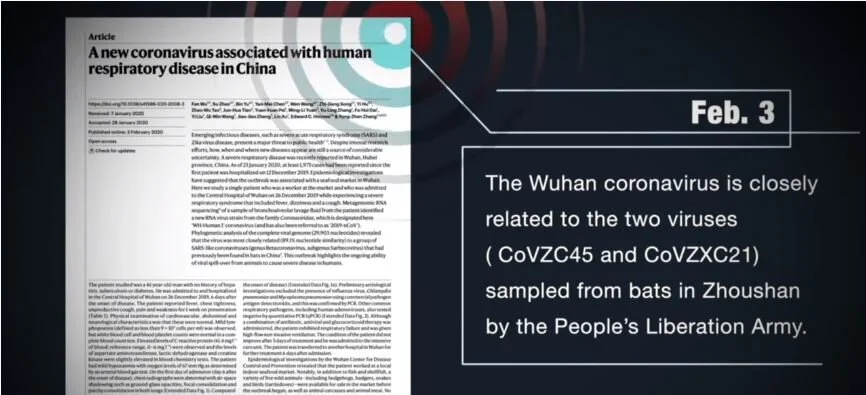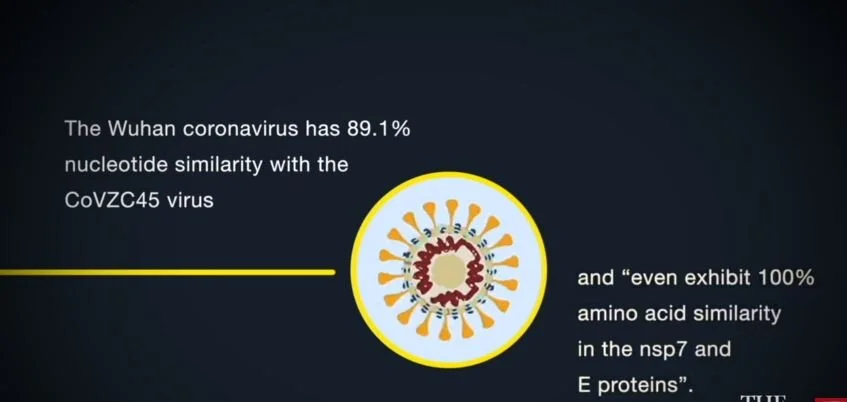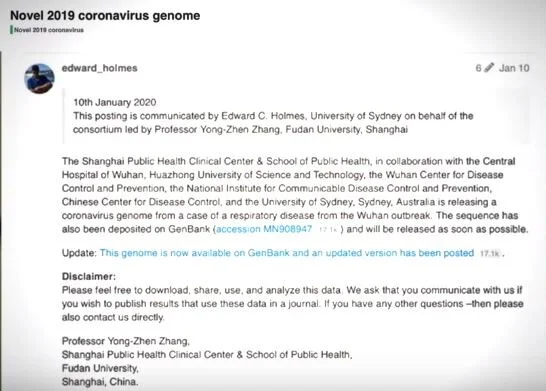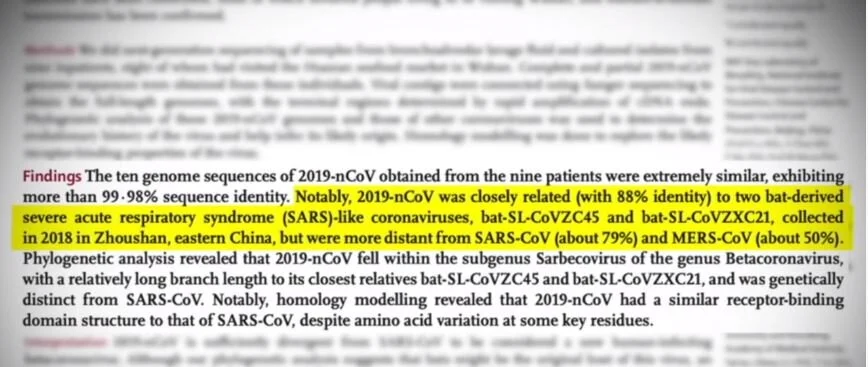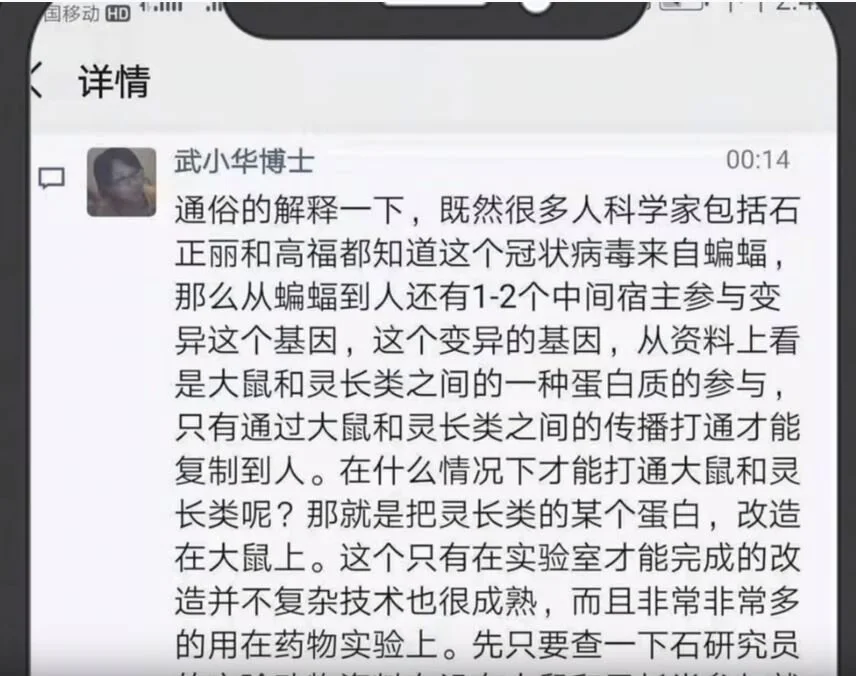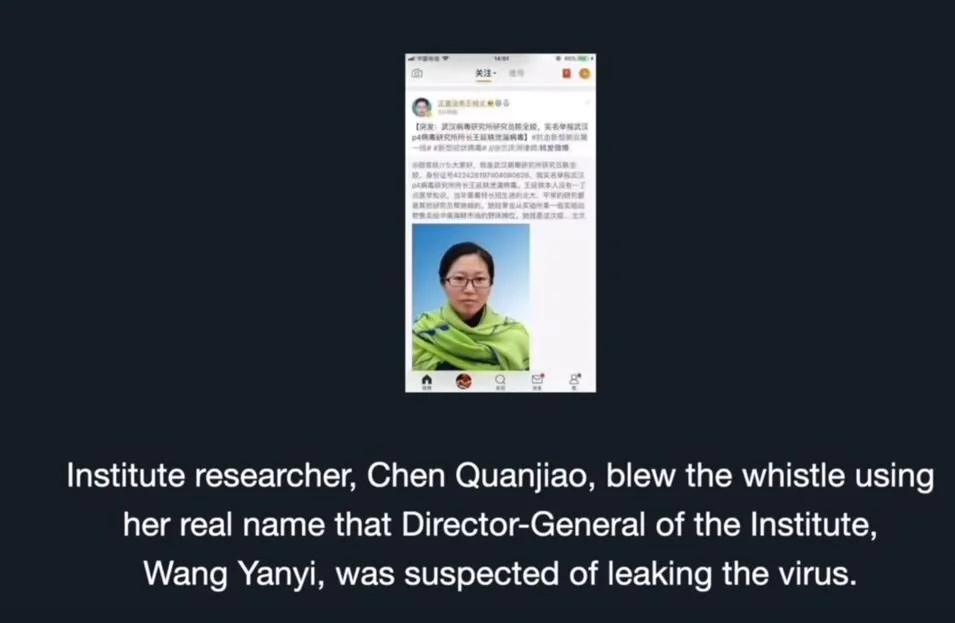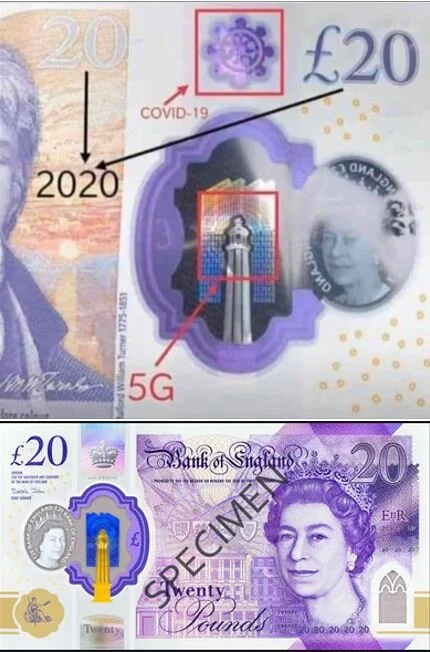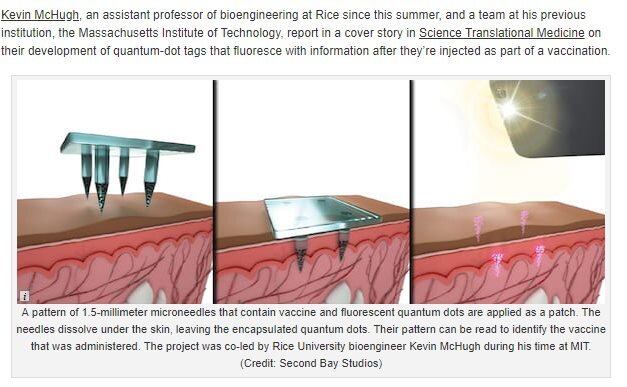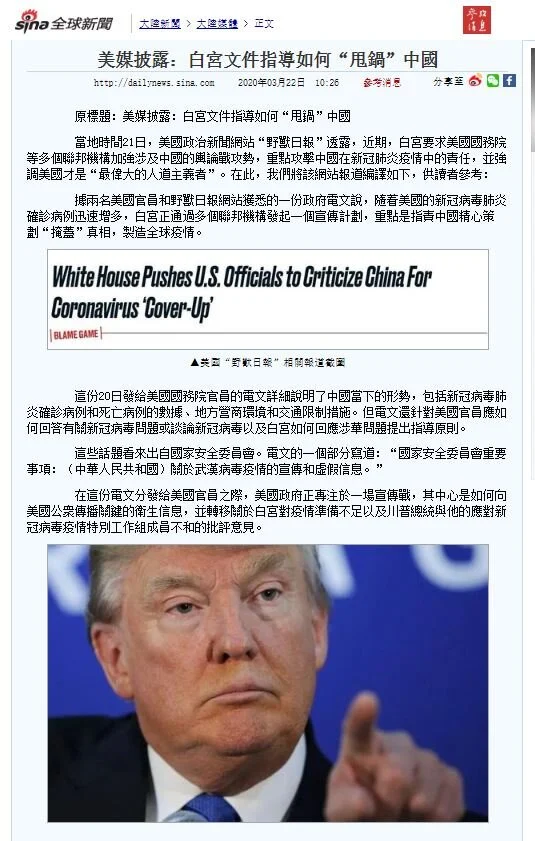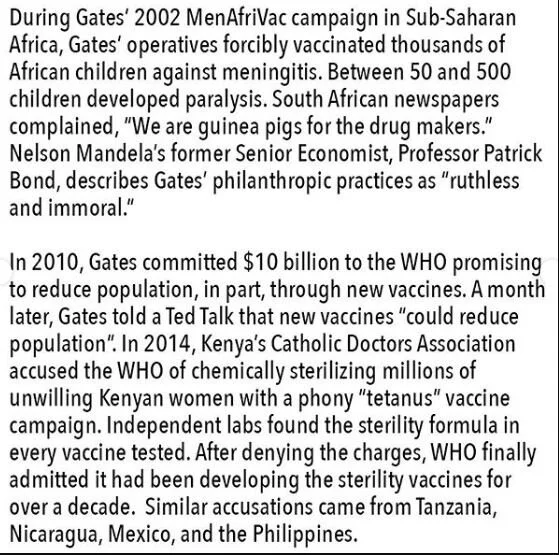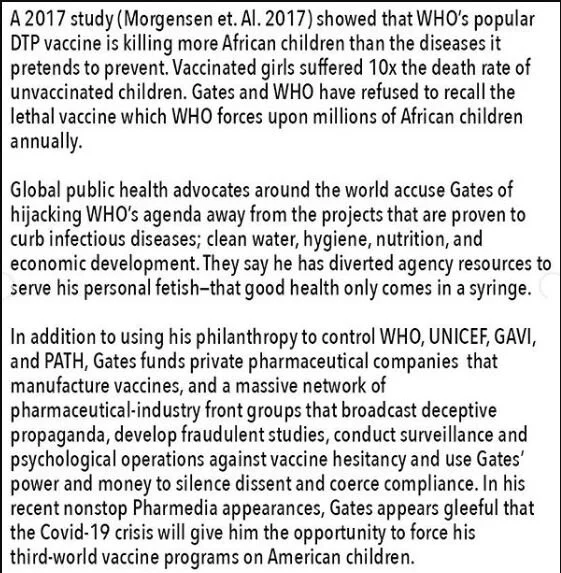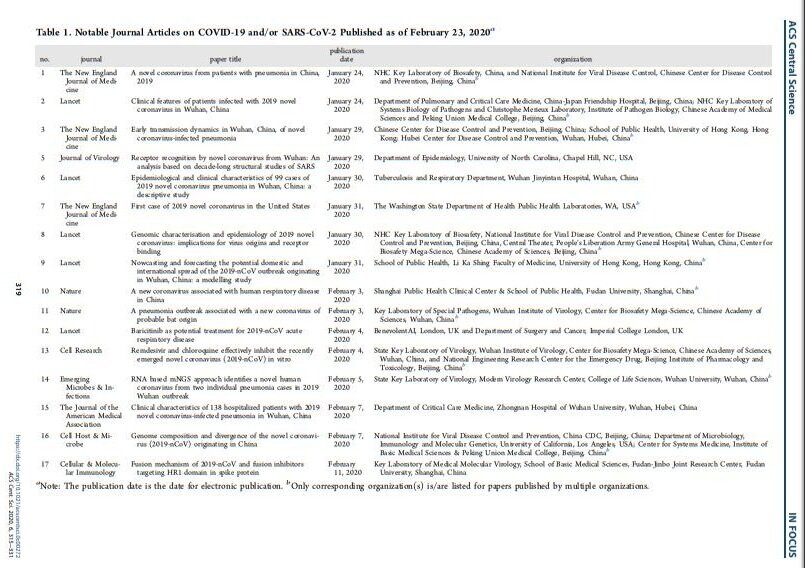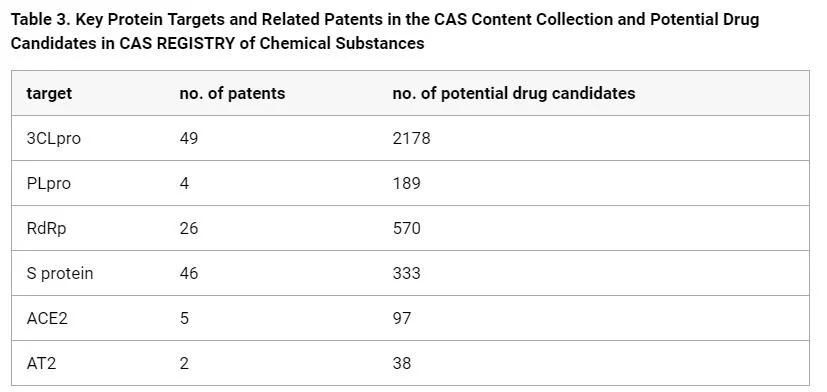THERE ARE A LOT OF PEOPLE IN DENIAL ABOUT THE COVID -19 PANDEMIC. HERE IS A CHRONOLOGY OF EVENTS. PART I COVERS THE PRE-HISTORY OF COVID 19 STARTING WITH THE ORIGIN OF UNITED STATES BIOLOGICAL WEAPONS RESEARCH. PART II COVERS THE HISTORY FROM THE FIRST MENTION OF THE VIRUS IN WUHAN IN 1981. READ AND DRAW YOUR OWN CONCLUSION.
PART I: COVID-19 PRE-HISTORY
"The experience of apparently autonomous white policies adds up to a picture of genocide if one is on the suffering end of them." - Black Bodies of Knowledge: Information Gangsters, Guerrillas and Notes on an Effective History by John Fiske
1847 - The American Medical Association was founded in 1847 and incorporated in 1897. In the early 1900s the AMA realized that there needed to be some changes in medical education. Medical practice and education in some areas left a lot to be desired (poor training and understaffed medical schools). It created the Council on Medical Education, with the purpose of evaluating countrywide medical training and making improvements where needed. However, they didn’t have enough money to do this. Enter Rockefeller and Carnegie and their funding and popularity. The president of the Carnegie Foundation, Henry Pritchett, met with the AMA and offered to take over the entire Council on Medical Education project. In the 1800′s the American Medical Association (AMA) resented their competitors who drove down the cost of medical care and drew away customers; The AMA called upon the strong arm of government force to vanquish the competition, it did so through regulating medical schools;
1901 - the Rockefeller Institute for Medical Research was founded. One of the names on the board of the Rockefeller Institute for Medical Research was Simon Flexner. It was Simon Flexner’s brother, Abraham Flexnor, who had one of the biggest hands in medical education reform. (Interestingly, Abraham Flexner was born in Kentucky, one of the largest growers and suppliers of hemp during WWII.) Abraham Flexner was on the staff of the Carnegie Foundation for the Advancement of Teaching. Rockefeller had made a massive fortune with Standard Oil and was setting his sights on gaining a monopoly in the drug and pharmaceutical industry. However, first he had to get rid of the competition, which consisted of natural non-allopathic healing modalities – naturopathy, homeopathy, eclectic medicine (botanical and herbal medicine), holistic medicine, etc. Hemp was also a threat to his plans, since cannabis has tremendous medical benefit – it can be used to alleviate pain for numerous diseases and even has anti-cancer properties.
1910 - Rockefeller paid Abraham Flexner to visit all the medical schools in the US at that time. He released the so-called “Flexner Report” in 1910, which called for the standardization of medical education and concluded there were too many doctors and medical schools in America. Rockefeller then used his control of the media to generate public outcry at the findings of the report – which, by means of the classic elite strategy of “Problem, Reaction, Solution” as David Icke calls it, ultimately led Congress to declare the AMA (American Medical Association) the only body with the right to grant medical school licenses in the United States. This suited Rockefeller perfectly – he then used the AMA (which may be better called to the American Murder Association due their widespread use and endorsement of toxic vaccines, drugs, chemotherapy and radiation) to compel the Government destroy the natural competition, which it did through regulating medical schools. After the Flexner Report, the AMA only endorsed schools with a drug-based curriculum. It didn’t take long before non-allopathic schools fell by the wayside due to lack of funding. Thus, Rockefeller had his monopoly on drugs, and Big Pharma and Rockefeller Medicine were born.
1931 - Dr. Cornelius Rhoads, under the auspices of the Rockefeller Institute for Medical Investigations, infects human subjects with cancer cells. He later goes on to establish the U.S. Army Biological Warfare facilities in Maryland, Utah, and Panama, and is named to the U.S. Atomic Energy Commission. While there, he begins a series of radiation exposure experiments on American soldiers and civilian hospital patients.
1932 - the Tuskegee Study, a scientific research program in which 400 syphilis-infected black men were recruited by the U.S. Public Health Service back in 1932. The participants were all told that they would be treated for their infections, but instead of treating their illness, all medicines were withheld. The black men were then actively prevented from obtaining treatment elsewhere as their bodies, and the bodies of their wives and children, were systematically ravaged by disease. The evil men who conceived that Nazi-style study justified their atrocity by alleging that scientists needed to learn how untreated syphilis progressed in the human body. For a period of forty years, between 1932 and 1972, the genocidal Tuskegee Study continued. It was not until 1972, when one newspaper finally had the courage to break the story to the public, that the Tuskegee Study was finally terminated. Dr. John Heller was the Director of Venereal Diseases at the Public Health Service from 1943 to 1948. Of the men in the Tuskeggee study, he said, ‘The men’s status did not warrant ethical debate. They were subjects, not patients: clinical material, not sick people.”
1935 - The Pellagra Incident. After millions of individuals die from Pellagra over a span of two decades, the U.S. Public Health Service finally acts to stem the disease. The director of the agency admits it had known for at least 20 years that Pellagra is caused by a niacin deficiency but failed to act since most of the deaths occurred within poverty-stricken black populations.
1939 - Margaret Sanger organized her “Negro project”, a program designed to eliminate members of what she believed to be an “inferior race.” Margaret Sanger justified her proposal because she believed that “The masses of Negroes….particularly in the South, still breed carelessly and disastrously, with the result that the increase among Negroes, even more than among whites, is from that portion of the population least intelligent and fit …”
1940 - Four hundred prisoners in Chicago are infected with Malaria in order to study the effects of new and experimental drugs to combat the disease. Nazi doctors later on trial at Nuremberg cite this American study to defend their own actions during the Holocaust.
1942 - The United States(US) becomes aware of the Japanese efforts in Biological Warfare (BW) and decided to start its own program. Chemical Warfare Services begins mustard gas experiments on approximately 4,000 servicemen. The experiments continue until 1945 and made use of Seventh Day Adventists who chose to become human guinea pigs rather than serve on active duty.
1943 - Planning began in 1943 with the appointment of a special New York State Health Department committee to study the advisability of adding fluoride to Newburgh's drinking water. The chairman of the committee was, again, Dr Harold C. Hodge, then chief of fluoride toxicity studies for the Manhattan Project. Subsequent members of the committee included Henry L. Barnett, a captain in the Project's Medical Section, and John W. Fertig, in 1944 with the Office of Scientific Research and Development-the super-secret Pentagon group which sired the Manhattan Project. Their military affiliations were kept secret. Hodge was described as a pharmacologist, Barnett as a pediatrician. Placed in charge of the Newburgh project was David B. Ast, chief dental officer of the New York State Health Department. Ast had participated in a key secret wartime conference on fluoride, held by the Manhattan Project in January 1944, and later worked with Dr Hodge on the Project's investigation of human injury in the New Jersey incident.
1944 - A Manhattan Project memorandum of 29 April 1944 states: "Clinical evidence suggests that uranium hexafluoride may have a rather marked central nervous system effect... It seems most likely that the F [code for fluoride] component rather than the T [code for uranium] is the causative factor."
The memo, from a captain in the medical corps, is stamped SECRET and is addressed to Colonel Stafford Warren, head of the Manhattan Project's Medical Section. Colonel Warren is asked to approve a program of animal research on CNS effects. o"Since work with these compounds is essential, it will be necessary to know in advance what mental effects may occur after exposure... This is important not only to protect a given individual, but also to prevent a confused workman from injuring others by improperly performing his duties. The author of the 1944 CNS research proposal attached to the 29 April memo was Dr Harold C. Hodge-at the time, chief of fluoride toxicology studies for the University of Rochester division of the Manhattan Project.
August 20, 1947 - After World War II, a series of trials were held to hold members of the Nazi party responsible for a multitude of war crimes. The trials were approved by President Harry Truman on May 2, 1945 and were led by the United States, Great Britain, and the Soviet Union. They began on November 20, 1945 in Nuremberg, Germany, in what became known as the Nuremberg trials. In one of the trials, which became known as the "Doctors' Trial", German physicians responsible for conducting unethical medical procedures on humans during the war were tried. They focused on physicians who conducted inhumane and unethical human experiments in concentration camps, in addition to those who were involved in over 3,500,000 sterilizations of German citizens. Several of the accused argued that their experiments differed little from those used before the war, and that there was no law that differentiated between legal and illegal experiments. This worried Drs. Andrew Ivy and Leo Alexander, who worked with the prosecution during the trial. In April 1947, Dr. Alexander submitted a memorandum to the United States Counsel for War Crimes outlining six points for legitimate medial research. On August 20, 1947, the judges delivered their verdict against Karl Brandt and 22 others. The verdict reiterated the memorandum's points and, in response to expert medical advisers for the prosecution, revised the original six points to ten. The ten points became known as the "Nuremberg Code"
The ten points of the code were given in the section of the verdict entitled "Permissible Medical Experiments":
1. The voluntary consent of the human subject is absolutely essential.
2. The experiment should be such as to yield fruitful results for the good of society, unprocurable by other methods or means of study, and not random and unnecessary in nature.
3. The experiment should be so designed and based on the results of animal experimentation and a knowledge of the natural history of the disease or other problem under study that the anticipated results will justify the performance of the experiment.
4. The experiment should be so conducted as to avoid all unnecessary physical and mental suffering and injury.
5. No experiment should be conducted where there is an a priori reason to believe that death or disabling injury will occur; except, perhaps, in those experiments where the experimental physicians also serve as subjects.
6. The degree of risk to be taken should never exceed that determined by the humanitarian importance of the problem to be solved by the experiment.
7. Proper preparations should be made and adequate facilities provided to protect the experimental subject against even remote possibilities of injury, disability, or death.
8. The experiment should be conducted only by scientifically qualified persons. The highest degree of skill and care should be required through all stages of the experiment of those who conduct or engage in the experiment.
9. During the course of the experiment the human subject should be at liberty to bring the experiment to an end if he has reached the physical or mental state where continuation of the experiment seems to him to be impossible.
10. During the course of the experiment the scientist in charge must be prepared to terminate the experiment at any stage, if he has probable cause to believe, in the exercise of the good faith, superior skill and careful judgment required of him that a continuation of the experiment is likely to result in injury, disability, or death to the experimental subject.
1950 Sept. 20-26 - One of the biggest experiments involved the use of Serratia marcescens and bacillus globigibeing sprayed over 117 square miles of the San Francisco area, causing pneumonia-like infections in many of the residents. The family of one elderly man who died in the test sued the government, but lost. To this day, syraceus is a leading cause of death among the elderly in the San Francisco area.
1953 - U.S. military releases clouds of zinc cadmium sulfide gas over Winnipeg, St. Louis, Minneapolis, Fort Wayne, the Monocacy River Valley in Maryland, and Leesburg, Virginia. Their intent is to determine how efficiently they could disperse chemical agents. CIA initiates Project MKULTRA. This is an eleven year research program designed to produce and test drugs and biological agents that would be used for mind control and behavior modification. Six of the subprojects involved testing the agents on unwitting human beings.
October 1954 -
1955 - the joint Army-CIA BW test in 1955, still classified, in which an undisclosed bacteria was released in the Tampa Bay region of Florida, causing a dramatic increase in whooping cough infections, including twelve deaths.
1956 - The Soviet Union accused the U.S. of using biological weapons in Korea, which lead them to threaten future use of Chemical and Biological weapons. This changed the focus of the U.S. program to a more defensive one. Before this, the bulk of the research was based at Ft. Detrick and used "surrogate biological agents" to model more deadly organisms. Most of the offensive tests were based on "secret spraying" of organisms over populated areas. This program was (supposedly) shut down in 1969.
1956 - U.S. military releases mosquitoes infected with Yellow Fever over Savannah, Ga and Avon Park, Fl. Following each test, Army agents posing as public health officials test victims for effects.
1963 - The mass vaccination campaigns of the 1950s and '60s may be causing hundreds of deaths a year because of a cancer-causing virus that contaminated the first polio vaccine, according to scientists. Known as SV40, the virus came from dead monkeys whose kidney cells were used to culture the first Salk vaccines. Doctors estimate that the virus was injected into tens of millions during the vaccination campaigns, including several million in Canada, before being detected and screened out in 1963. Those born between 1941 and 1961 are thought to be most at risk of having been infected.
1965 - Prisoners at the Holmesburg State Prison in Philadelphia are subjected to dioxin, the highly toxic chemical component of Agent Orange used in Viet Nam. The men are later studied for development of cancer, which indicates that Agent Orange had been a suspected carcinogen all along.
1966 - CIA initiates Project MKOFTEN, a program to test the toxicological effects of certain drugs on humans and animals.
1966 July 7-10 - The virus Bacillus subtilis was released throughout the New York subway system, conducted by the U.S. Army's Special Operations Division. Due to the vast number of people exposed it would virtually impossible to identify, let alone prove, and specific health problems resulting directly from this test.
1967 - CIA and Department of Defense implement Project MKNAOMI, successor to MKULTRA and designed to maintain, stockpile and test biological and chemical weapons.
1968 - The Club of Rome is founded by Aurelio Peccei and Alexander King at the Academia dei Lincei in Rome. It chose as its initial theme, “The Predicament of Mankind.” From die outset, the Club’s thinking has been governed by three related conceptual guidelines:
adopting a global approach to the vast and complex problems of a world in which interdependence between nations withing a single planetary system is constantly growing;
focusing on issues, policies and options in a longer-term perspective than is possible for governments, which respond to the immediate concerns of an insufficiently informed constituency;
seeking a deeper understanding of the interactions within the tangle of contemporary problems - political, economic, social, cultural, psychological, technological and environmental - for which the Club of Rome adopted the term ‘the world problematique’.
1968 - 69 - The Hong Kong flu, which was influenza A type H3N2, killed over 30,000 people in the U.S. alone. That was a fortuitous learning event for some because it taught them that the flu could still conceivably be used to wipe out a population. But at the same time, it pointed out the need to precondition the populace so that those who might normally be resistant could be rendered susceptible. Hence the development of the vaccine program and the aerial spraying procedures to condition the population. The purpose of the chemicals in the chemtrails is to help the viral envelope fuse with lung cells, permitting easier penetration and infection.
June 9, 1969 - Dr. D. M. MacArthur, then Deputy Director of Research and Technology for the Dept. of Defense, told the House Subcommittee on Appropriations:
"Molecular biology is a field that is advancing very rapidly, and eminent biologists believe that within a period of 5 to 10 years it would be possible to produce a synthetic biological agent, an agent that does not naturally exist and for which no natural immunity could have been acquired...a new infective microorganism which could differ in certain important aspects from any known disease-causing organisms. Most important of these is that it might be refractory [resistant] to the immunological and therapeutic processes upon which we depend to maintain our relative freedom from infectious disease...A research program to explore the feasibility of this could be completed in approximately 5 years at a total cost of $10 million."
Whether such research is categorized as “offensive” or “defensive” is immaterial: in order to defend oneself against a possible new virus, so the reasoning goes, one must first develop the virus.
1972 - The Club of Rome publishes The Limits to Growth. The study, commissioned by the Club, was accomplished by an international team of professors and researchers at MIT using the system dynamics methodology of Jay Forrester.. This was a pioneering attempt to project in interaction a number of quantifiable elements of the problematique. The report and the controversy it generated immediately gave the Club of Rome worldwide visibility, or, as some would say, notoriety. It thereby achieved its main objective: the stimulation of a great debate on growth and society throughout the world. The Club was widely criticized for what was seen as advocacy of a zero growth economy. According to the Club’s publication, The First Global Revolution, “We fully accepted the pressing need for material growth in the poor countries of the world, but warned readers about the consequences of an unthinking pursuit of growth by the industrialized countries, depletion of the world resource base, deteriorization of the environment, and the domination of material values in society.”
1973 - “We are in fact establishing the conditions for a possible pandemic of an oncogenic virus varied on the scale of the influenza of 1918.... It is possible to visualize the mutation of a virus into a variety of high contageosity to man, resulting in a pandemic of neoplastic disease before we could develop a vaccine.” - J. Clemenson, Leukemogenesis
1975 - Dr. Robert Gallo isolates a virus, HTLV-I, a retrovirus giving it the ability to infect humans. This same year, For Detrick (the US Army’s centr for biological warfare research in Frederick, Maryland) was renamed the Frederick Cancer Research Facilities and placed under the supervision of Gallo’s employer, the National Cancer Institute.
1976 - Between 1970 and 1975, the period the National Academy of Sciences-National Research Council (NAS-NRC) scientific advisors informed DOD decision-makers that AIDS-like viruses could be readied, American cold war efforts focused on Zaire and Angola. Following the withdrawal of American forces in Vietnam, Secretary of State Henry Kissinger ordered the CIA to begin a major covert military operation against MPLA (communist bloc backed) "rebels" in Angola.
Zaire, indebted by over $4.5 billion to the International Monetary Fund, and headed by President Mobutu—paradoxically regarded as one of the world's wealthiest men with "a personal fortune put at $2,939,200,000 [1984 estimate] banked in Switzerland—was wooed by NATO allies during the 1970s (principally the U.S.) to be a staging area for CIA backed, Portuguese, French, and mainly South African mercenaries.
"American corporate investment, notably in copper and aluminum, doubled to about $50 million following a 1970 visit by Mobutu to the United States. Major investors included Chase-Manhattan, Ford, General Motors, Gulf, Shell, Union Carbide, and several other large concerns."
However, in 1975 Mobutu apparently turned against NATO allies and increased negotiations with China and Russia. He proclaimed his intention to nationalize foreign owned enterprises. In June 1975, following the CIA's thwarted efforts to convince the U.S. Congress to appropriate more funds for Mobutu and the Angola program (A total of $31.7 million had already been "drawn from the CIA's FY 75 contingency fund" which was "exhausted on 27 November 1975"). Mobutu expelled the American ambassador and arrested many of the CIA's Zairian agents, placing some under death sentences.
The following year, in October 1976, the "Ebola Zaire virus" broke-out in "fifty five villages surrounding the [Yambuku] hospital" first killing "people who had received injections." Mobutu then ordered his army to "seal off the Bumba zone with roadblocks" and "shoot anyone trying to come out" so "no one knew what was happening, who was dying, [or] what the virus was doing." Shortly thereafter, Ebola victim specimens were sent to the CDC, Special (meaning "secret" within the American intelligence community) Pathogens Branch; to Porton, England's controversial chemical and bio-logical weapons (CBW) laboratories; and teams of WHO and CDC researchers were dispatched to the Ebola region in Mobutu's private, American supplied C-130 Buffalo troop transport plane.
By the end of 1976, the Zairian leader had reconciled his differences with the American intelligence and corporate communities believing that Zaire would continue to reap his non-communist allies' social and economic aid. On April 4, 1977, Mobutu suspended diplomatic relations with Cuba; on April 21, reduced ties with the Soviet Union; and on May 2, he cut ties with East Germany.46
1977 -1978 - AIDS virus was created from Visna and HTLV-I. It is claimed (but not proved) that the new virus was then tested on convicts who volunteered for the experiment in return for their release from prison. Failing to show any early symptoms of disease, the prisoners were released after six months. Some were homosexual, and went to New York, where the disease was first attested in 1979. Dr. Theodore Strecker (1989) suggests that:
"(The US) National Cancer Institute in collaboration with the World Health Organization made the AIDS virus in their laboratories in Fort Dietrich (now NCI). They combined the deadly retroviruses, bovine leukaemia virus and sheep visna virus, and injected then into human tissue cultures. The result was the AIDS virus, the first human retrovirus known to man and now believed to be 100 percent fatal to those infected "
Dr. Strecker (1989) further contends that AIDS "couldn't have engineered itself. It was engineered in a laboratory by virologists."
The record reveals that the World Health Organization (WHO) vigorously:
"called for scientists to work with the deadly agents and attempt to make a hybrid virus that would be deadly to humans. An attempt should be made to see if viruses can in fact exert selective effects on immune function. The possibility should be looked into that the immune response to the virus itself may be impaired if the infecting virus damages, more or less selectively, the cell responding to the virus."
The AIDS epidemic was triggered by "the mass vaccination campaign which eradicated small pox." In the words of an advisor to the WHO:
"I thought it was just a coincidence until we studied the latest findings about the reactions which can be caused by Vaccinia. Now I believe the smallpox vaccine theory is the explanation to the explosion of AIDS." (Wright, 1989)
The WHO used smallpox vaccine as their vicious vehicle to spread the AIDS virus and the geographic areas chose were Uganda, and other African countries, Haiti, Brazil and Japan. The present "AIDS epidemiology coincides with these geographic areas." According to the London Times article from May 11, 1987 by science editor Pearce Wright entitled ‘Smallpox vaccine 'triggered Aids virus':
"However, as epidemiologists gleaned more information about Aids from reluctant Central African countries, clues began to emerge from the new findings when examined against the wealth of detail known about smallpox as recorded in the Final Report of the Global Commission for the Certification of Smallpox Eradication.
The smallpox vaccine theory would account for the position of each of the seven Central African states which top the league table of most-affected countries; why Brazil became the most afflicted Latin American country; and how Haiti became the route for the spread of Aids to the US. It also provides an explanation of how the infection was spread more evenly between males and females in Africa than in the West and why there is less sign of infection among five to 11-year-olds in Central Africa.
Although no detailed figures are available, WHO information indicated that the Aids league table of Central Africa matches the concentration of vaccinations. The greatest spread of HIV infection coincides with the most intense immunization programmes, with the number of people immunised being as follows: Zaire 36,878,000; Zambia 19,060,000; Tanzania 14,972,000; Uganda 11,616,000; Malawai 8,118,000; Ruanda 3,382,000 and Burundi 3,274,000.
Brazil, the only South American country covered in the eradication campaign, has the highest incidence of Aids in that region. About 14,000 Haitians, on United Nations secondment to Central Africa, were covered in the campaign. They began to return home at a time when Haiti had become a popular playground for San Francisco homosexuals.
Dr Robert Gello, who first identified the Aids virus in the US, told The Times: 'The link between the WHO programme and the epidemic in Africa is an interesting and important hypothesis. 'I cannot say that it actually happened, but I have been saying for some years that the use of live vaccines such as that used for smallpox can activate a dormant infection such as HIV."
According to Dr. Theodore Strecker, "who unravelled this conundrum, the greatest murder mystery of all time":
"If the African green monkey could transmit AIDS to humans, the present known amount of infection in Africa makes it statistically impossible for a single episode, such a s a monkey biting someone, to have brought this epidemic to this point. The doubling time of the number of people infected, about every 14 months, when correlated with the first known case, and the present known number of cases, prove beyond a doubt that a large number of people had to have been infected at the same time. Starting in 1972 with the first case from our mythical monkey and doubling the number infected from that single source every 14 months you get only a few thousand cases. From 1972 to 1987 it is 15 years or 180 months. If it takes 14 months to double the number of cases, then there would have been 13 doublings, 1 then 2, the 4, then 8, etc. In 15 years, from a single source of infection there would be about 8,000 cases in Africa, not 75 million AIDS infected people. We are approaching World War 11 mortality statistics here without a shot being fired"
PART II: COVID-19 HISTORY
1981 - Dean Koontz writes in "The Eyes of Darkness" about the Wuhan 400 pandemic - "a severe pneumonia-like illness will spread throughout the globe, attacking the lungs and the bronchial tubes and resisting all known treatments. . . . They call the stuff 'Wuhan-400' because it was developed at their RDNA labs outside the city of Wuhan. . . . "
1982 - Gunter Friedrichs and Adam Schaff publish the book, MICROELECTRONICS and SOCIETY: For Better or For Worse: A Report to the Club of Rome.
1986 - 42 U.S. Code § 300aa–22 – Standards of responsibility In 1986 Congress passed the National Childhood Vaccine Injury Act (NCVIA), creating a no-fault compensation program to stabilize a vaccine market adversely affected by an increase in vaccine-related lawsuits and to facilitate compensation to claimants who found pursuing legitimate vaccine-inflicted injuries too difficult and cost prohibitive. Under 42 U.S. Code § 300aa–22 – Standards of responsibility: Paragraph (b), which addresses “Unavoidable adverse side effects; warnings” states,
“(1) No vaccine manufacturer shall be liable in a civil action for damages arising from a vaccine-related injury or death associated with the administration of a vaccine after October 1, 1988, if the injury or death resulted from side effects that were unavoidable even though the vaccine was properly prepared and was accompanied by proper directions and warnings.
Section (c) Direct warnings, states, “No vaccine manufacturer shall be liable in a civil action for damages arising from a vaccine-related injury or death associated with the administration of a vaccine after October 1, 1988, solely due to the manufacturer’s failure to provide direct warnings to the injured party (or the injured party’s legal representative) of the potential dangers resulting from the administration of the vaccine manufactured by the manufacturer.”
March 28, 1987 - Lancet publishes the article, Government-sponsored irradiation of people
1988 - The Club of Rome publishes The First Global Revolution
1994 - Laurie Garret, former senior fellow for global health as the Council on Foreign Relations publishes the best-selling book "The Coming Plague: Newly Emerging Diseases in a World Out of Balance". Garret would become a consultant for the 2011 movie "Contagion".
October 24, 1995 - Advisory Committee Report on Human Radiation Experiments
October 9, 1999 - The US Department of State is policing the population policy lockstep
Summary points
A tight taboo prevents demographers and United Nations agencies from confronting demographic entrapment - entrapment occurs when a population exceeds the carrying capacity of its ecosystem and is unable to buy in extra food or to migrate elsewhere.
Defections from this taboo are apt to be policed by the US Department of State; the presumed reason for this is that radical reduction in number of births in the South (one child families) would question resource consumption in the North
The major health programme of the new millennium has to be a one child world, linked to moderation in resource consumption in the North
Entrapment is merely the worst of many problems (poverty, malnutrition, etc) in which population plays a large part; to make it taboo it is to hinder the resolution of these other problems also
2000 - Created in 2000, GAVI is an international organisation - a global Vaccine Alliance, bringing together public and private sectors with the shared goal of creating equal access to new and underused vaccines for children living in the world’s poorest countries. GAVI HAS HELPED VACCINATE MORE THAN 760 MILLION CHILDREN IN THE WORLD’S POOREST COUNTRIES.
May 22, 2003 - Bayer Sold HIV-Risky Meds -
The medicine, called Factor VIII concentrate, can stop or prevent potentially fatal bleeding in people with hemophilia, a genetic condition that prevents blood from clotting normally.
Early in the AIDS epidemic, the medicine was made using plasma from 10,000 or more donors. There was not yet a screening test for HIV, the virus that causes AIDS, so even a small number of HIV-positive donors could taint a large pool of plasma recipients.
As a result, thousands of hemophiliacs became infected with HIV. Bayer and three other companies that made the concentrate have paid about $600 million to settle more than 15 years of lawsuits accusing them of making a dangerous product, the newspaper said. . . .
Cutter also sold the older medicine in Argentina, Indonesia, Japan, Malaysia, and Singapore after February 1984, according to the documents. The newspaper said Cutter shipped more than 100,000 vials of unheated concentrate, worth more than $4 million, after it began selling the safer product.
The sales continued partly because of Cutter's desire to deplete stocks of the older medicine, and partly because of fixed-price contracts, for which the company believed the older product would be cheaper to make, the newspaper said.
2004 - the Centers for Disease Control and Prevention (CDC) filed a patent application covering specific isolated components of a type of coronavirus. . . . severe acute respiratory syndrome (SARS). The patent was issued and published in 2007 and is set to expire in 2024.
February 25, 2004 - Bill Gates predicts death of the password
“At present there is considerable interest in the development of a rapid and reliable method for the identification of viral respiratory pathogens. Regarding influenza viruses, the segmented nature of their genomes makes reassortment among viruses an important mechanism for generating genetic diversity. Reassortment among influenza A virus subtypes is of particular importance because of their role in the generation of new pandemic strains in humans and generates a need for the development of new assays which are capable of supplying information on the hemagglutinins and neuraminidases of influenza A viruses. For this aim, we have developed a genomic strategy for parallel screening of respiratory viruses by focusing presently on the typing and subtyping of influenza viruses. . . . While DNA arrays are considered promising tools for the genome-based detection of pathogens, they have still found only a very few applications for virus analysis and identification. . . . In summary, the assay with the Influenza Chip proved to be a sensitive and reliable method for the identification of influenza viruses. The whole process from hybridization to image capture can be completed in several hours and provides a rapid means of identification of the types and subtypes of influenza viruses. The Influenza Chip, as described in this paper, is preliminary, but recent data obtained with a second generation of Respiratory Virus Chip, which was developed with probes specific for major respiratory viruses and for which the amplification protocol and hybridization conditions were improved, show promise that such a chip could be beneficial for the identification and surveillance of influenza viruses, as well as viruses other than influenza viruses which are known to induce symptoms clinically indistinguishable from those of true influenza.”
May 26, 2005 - Biochip sensors for the rapid and sensitive detection of viral disease
“Recent advances in DNA and protein microarray methodology and the emerging technology of cell-based sensors have massively increased the speed and sensitivity with which we can detect viral infections. The advantages of the multi-parameter microarray technologies could be combined with the speed and sensitivity of cell-based systems to give 'cell-omic' sensors. . . . n 2003, China took measures to contain an outbreak of 'flu-like illness' [1]; when the same disease (which came to be called severe acute respiratory syndrome, SARS) began to appear in other countries, the World Health Organization initiated a global response [2]. This incident highlighted, on a world stage, the need for rapid and accurate techniques for pathogen identification. Failure to have such tools puts lives at risk by severely hampering containment and effective vaccination strategies.”
October 16, 2005 - Citigroup came out with a brochure for investors called “Plutonomy: Buying Luxury, Explaining Global Imbalances” urging investors to put money into a ‘Plutonomy Basket” that states,
““The World is dividing into two blocs – the Plutonomy and the rest. The U.S., UK, and Canada are the key Plutonomies – economies powered by the wealthy. Continental Europe (ex-Italy) and Japan are in the egalitarian bloc.
Equity risk premium embedded in “global imbalances” are unwarranted. In plutonomies the rich absorb a disproportionate chunk of the economy and have a massive impact on reported aggregate numbers like savings rates, current account deficits, consumption levels, etc. This imbalance in inequality expresses itself in the standard scary “global imbalances”. We worry less.
We project that the plutonomies (the U.S., UK, and Canada) will likely see even more income inequality, disproportionately feeding off a further rise in the profit share in their economies, capitalist-friendly governments, more technology-driven productivity, and globalization.
In a plutonomy there is no such animal as “the U.S. consumer” or “the UK consumer”, or indeed the “Russian consumer”. There are rich consumers, few in number, but disproportionate in the gigantic slice of income and consumption they take. There are the rest, the “non-rich”, the multitudinous many, but only accounting for surprisingly small bites of the national pie.
To continue with the U.S., the top 1% of households also account for 33% of net worth, greater than the bottom 90% of households put together. It gets better (or worse, depending on your political stripe) – the top 1% of households account for 40% of financial net worth, more than the bottom 95% of households put together. This is data for 2000, from the Survey of Consumer Finances (and adjusted by academic Edward Wolff).
Most “Global Imbalances” (high current account deficits and low savings rates, high consumer debt levels in the Anglo-Saxon world, etc) that continue to (unprofitably) preoccupy the world’s intelligentsia look a lot less threatening when examined through the prism of plutonomy.
The reasons why some societies generate plutonomies and others don’t are somewhat opaque, and we’ll let the sociologists and economists continue debating this one. Kevin Phillips in his masterly “Wealth and Democracy” argues that a few common factors seem to support “wealth waves” – a fascination with technology (an Anglo-Saxon thing according to him), the role of creative finance, a cooperative government, an international dimension of immigrants and overseas conquests invigorating wealth creation, the rule of law, and patenting inventions. Often these wealth waves involve great complexity.
Society and governments need to be amenable to disproportionately allow/encourage the few to retain that fatter profit share. The Managerial Aristocracy, like in the Gilded Age, the Roaring Twenties, and the thriving nineties, needs to commandeer a vast chunk of that rising profit share, either through capital income, or simply paying itself a lot.
We have all heard the lament. A bearish guru, somber and serious, spelling out that the end is near if something is not done urgently about those really huge, nasty “Global Imbalances”.
Almost all the smart folks we know – our investors, our colleagues, our friends in academia, politicians believe in some variant of these two stories. There are very few exceptions who consider these “Global Imbalances” not scary but perfectly natural and rather harmless.
To summarize so far, plutonomies see the rich absorb a disproportionate chunk of the economy, their decision to lower their savings rate, often corresponding to the asset booms that often accompany plutonomy, has a massive negative impact on reported aggregate numbers like savings rates, current account deficits, consumption levels, etc. We believe the key global imbalance is that some large economies have become plutonomies, and others have not — this imbalance in inequality expresses itself in the standard scary “global imbalances” that so worry the bears and most observers. They do not worry us much. In addition, the emerging market entrepreneur/plutocrats (Russian oligarchs, Chinese real estate/manufacturing tycoons, Indian software moguls, Latin American oil/agriculture barons), benefiting disproportionately from globalization are logically diversifying into the asset markets of the developed plutonomies. They are attracted by the facets that facilitated the re-emergence of plutonomies in the U.S., UK, and Canada – technology, internationalism, the rule of law, financial innovation and capitalist-friendly cooperative governments. This further inflates the asset markets in these plutonomies, enabling the rich there to lower their savings rates further, and worsening their current account balances further. Just as misery loves company, we posit that the “plutos” like to hang out together.
At the heart of plutonomy, is income inequality. Societies that are willing to tolerate/endorse income inequality, are willing to tolerate/endorse plutonomy.
Corporate tax rates could rise, choking off returns to the private sector, and personal taxation rates could rise – dividend, capital-gains, and inheritance tax rises would hurt the plutonomy.
Indeed, in the U.S., the current administration’s attempts to change the estate tax code and make permanent dividend tax cuts, plays directly into the hands of the plutonomy.
Protectionism or regulation. Here, we believe lies a cornerstone of the current wave of plutonomy, and with it, the potential for capitalists around the world to profit. The wave of globalization that the world is currently surfing, is clearly to the benefit of global capitalists, as we have highlighted. But it is also to the disadvantage of developed market labor, especially at the lower end of the food-chain.
A third threat comes from the potential social backlash. To use Rawls-ian analysis, the invisible hand stops working. Perhaps one reason that societies allow plutonomy, is because enough of the electorate believe they have a chance of becoming a Plutoparticipant. Why kill it off, if you can join it? In a sense this is the embodiment of the “American dream”. But if voters feel they cannot participate, they are more likely to divide up the wealth pie, rather than aspire to being truly rich.
Could the plutonomies die because the dream is dead, because enough of society does not believe they can participate? The answer is of course yes. But we suspect this is a threat more clearly felt during recessions, and periods of falling wealth, than when average citizens feel that they are better off. There are signs around the world that society is unhappy with plutonomy – judging by how tight electoral races are. But as yet, there seems little political fight being born out on this battleground.
Our overall conclusion is that a backlash against plutonomy is probable at some point. However, that point is not now. So long as economies continue to grow, and enough of the electorates feel that they are benefiting and getting rich in absolute terms, even if they are less well off in relative terms, there is little threat to Plutonomy in the U.S., UK, etc.
If we are right, that the rise of income inequality, the rise of the rich, the rise of plutonomy, is largely to blame for these “perplexing” global imbalances. Surely, then, it is the collapse of plutonomy, rather than the collapse of the U.S. dollar that we should worry about to bring an end to imbalances. In other words, we are fretting unnecessarily about global imbalances.
There are rich consumers, and there are the rest.”
November 16, 2006 - Chiron Corp submits a patent for “severe acute respiratory syndrome coronavirus”. The patent abstract states, “An outbreak of a virulent respiratory virus, now known as Severe Acute Respiratory Syndrome (SARS), was identified in Hong Kong, China and a growing number of countries around the world in 2003. The invention relates to nucleic acids and proteins from the SARS coronavirus. These nucleic acids and proteins can be used in the preparation and manufacture of vaccine formulations, diagnostic reagents, kits, etc. The invention also provides methods for treating SARS by administering small molecule antiviral compounds, as well as methods of identifying potent small molecules for the treatment of SARS. . . . The invention also relates to diagnostic reagents, kits (comprising such reagents) and methods which can be used to diagnose or identify the presence or absence of a SARS virus in a biological sample.”
2007 - An article entitled "Severe Acute Respiratory Syndrome Coronavirus as an Emerging and Reemerging Infection" appears in the Clinical Microbiology Review, Oct. 2007 and states, "The presences of a large reservoir of SARS-CoV-like viruses in horseshoe bats together with the culture of eating exotic mammals in southern China, is a time bomb." https://www.ncbi.nlm.nih.gov/pubmed/17934078
May 14, 2007 - NBC Nightly News predicts biochip in 2017
2009 – Validity Sensors and PayPal discuss using biometrics for identification of online users instead of passwords. The meeting inspired the idea to work on an industry standard designed around public key cryptography, enabling a passwordless log-in backed purely by local authentication.
February 20, 2010 - Bill Gates promotes population control during the Innovating to zero! TED Talk.
May 2010 - The Rockefeller Foundation and Global Business Network publish Scenarios for the Future of Technology and International Development. The report stated,
“The goal of this project was not to affirm what is already known and knowable about what is happening right now at the intersections of technology and development. Rather, it was to explore the many ways in which technology and development could co-evolve—could both push and inhibit each other—in the future, and then to begin to examine what those possible alternative paths may imply for the world’s poor and vulnerable populations. Such an exercise required project participants to push their thinking far beyond the status quo, into uncharted territory.
In the scenario entitled LOCK STEP – A world of tighter top-down government control and more authoritarian leadership, with limited innovation and growing citizen pushback, the report predicted
“In 2012, the pandemic that the world had been anticipating for years finally hit. Unlike 2009’s H1N1, this new influenza strain—originating from wild geese—was extremely virulent and deadly. Even the most pandemic-prepared nations were quickly overwhelmed when the virus streaked around the world, infecting nearly 20 percent of the global population and killing 8 million in just seven months, the majority of them healthy young adults. The pandemic also had a deadly effect on economies: international mobility of both people and goods screeched to a halt, debilitating industries like tourism and breaking global supply chains. Even locally, normally bustling shops and office buildings sat empty for months, devoid of both employees and customers. The pandemic blanketed the planet—though disproportionate numbers died in Africa, Southeast Asia, and Central America, where the virus spread like wildfire in the absence of official containment protocols. But even in developed countries, containment was a challenge. The United States’s initial policy of “strongly discouraging” citizens from flying proved deadly in its leniency, accelerating the spread of the virus not just within the U.S. but across borders. However, a few countries did fare better—China in particular. The Chinese government’s quick imposition and enforcement of mandatory quarantine for all citizens, as well as its instant and near-hermetic sealing off of all borders, saved millions of lives, stopping the spread of the virus far earlier than in other countries and enabling a swifter postpandemic recovery.
China’s government was not the only one that took extreme measures to protect its citizens from risk and exposure. During the pandemic, national leaders around the world flexed their authority and imposed airtight rules and restrictions, from the mandatory wearing of face masks to body-temperature checks at the entries to communal spaces like train stations and supermarkets. Even after the pandemic faded, this more authoritarian control and oversight of citizens and their activities stuck and even intensified. In order to protect themselves from the spread of increasingly global problems—from pandemics and transnational terrorism to environmental crises and rising poverty—leaders around the world took a firmer grip on power. At first, the notion of a more controlled world gained wide acceptance and approval. Citizens willingly gave up some of their sovereignty—and their privacy—to more paternalistic states in exchange for greater safety and stability. Citizens were more tolerant, and even eager, for top-down direction and oversight, and national leaders had more latitude to impose order in the ways they saw fit. In developed countries, this heightened oversight took many forms: biometric IDs for all citizens, for example, and tighter regulation of key industries whose stability was deemed vital to national interests. In many developed countries, enforced cooperation with a suite of new regulations and agreements slowly but steadily restored both order and, importantly, economic growth. Across the developing world, however, the story was different—and much more variable. Top-down authority took different forms in different countries, hinging largely on the capacity, caliber, and intentions of their leaders. In countries with strong and thoughtful leaders, citizens’ overall economic status and quality of life increased. In India, for example, air quality drastically improved after 2016, when the government outlawed highemitting vehicles. In Ghana, the introduction of ambitious government programs to improve basic infrastructure and ensure the availability of clean water for all her people led to a sharp decline in water-borne diseases. But more authoritarian leadership worked less well—and in some cases tragically—in countries run by irresponsible elites who used their increased power to pursue their own interests at the expense of their citizens. There were other downsides, as the rise of virulent nationalism created new hazards: spectators at the 2018 World Cup, for example, wore bulletproof vests that sported a patch of their national flag. Strong technology regulations stifled innovation, kept costs high, and curbed adoption. In the developing world, access to “approved” technologies increased but beyond that remained limited: the locus of technology innovation was largely in the developed world, leaving many developing countries on the receiving end of technologies that others consider “best” for them. Some governments found this patronizing and refused to distribute computers and other technologies that they scoffed at as “second hand.” Meanwhile, developing countries with more resources and better capacity began to innovate internally to fill these gaps on their own. Meanwhile, in the developed world, the presence of so many top-down rules and norms greatly inhibited entrepreneurial activity. Scientists and innovators were often told by governments what research lines to pursue and were guided mostly toward projects that would make money (e.g., market-driven product development) or were “sure bets” (e.g., fundamental research), leaving more risky or innovative research areas largely untapped. Well-off countries and monopolistic companies with big research and development budgets still made significant advances, but the IP behind their breakthroughs remained locked behind strict national or corporate protection. Russia and India imposed stringent domestic standards for supervising and certifying encryption-related products and their suppliers—a category that in reality meant all IT innovations. The U.S. and EU struck back with retaliatory national standards, throwing a wrench in the development and diffusion of technology globally. Especially in the developing world, acting in one’s national self-interest often meant seeking practical alliances that fit with those interests—whether it was gaining access to needed resources or banding together in order to achieve economic growth. In South America and Africa, regional and sub-regional alliances became more structured. Kenya doubled its trade with southern and eastern Africa, as new partnerships grew within the continent. China’s investment in Africa expanded as the bargain of new jobs and infrastructure in exchange for access to key minerals or food exports proved agreeable to many governments. Cross-border ties proliferated in the form of official security aid. While the deployment of foreign security teams was welcomed in some of the most dire failed states, one-size-fits-all solutions yielded few positive results. By 2025, people seemed to be growing weary of so much top-down control and letting leaders and authorities make choices for them. Wherever national interests clashed with individual interests, there was conflict. Sporadic pushback became increasingly organized and coordinated, as disaffected youth and people who had seen their status and opportunities slip away—largely in developing countries—incited civil unrest. In 2026, protestors in Nigeria brought down the government, fed up with the entrenched cronyism and corruption. Even those who liked the greater stability and predictability of this world began to grow uncomfortable and constrained by so many tight rules and by the strictness of national boundaries. The feeling lingered that sooner or later, something would inevitably upset the neat order that the world’s governments had worked so hard to establish. “
June 2010 - Zhengli Shi and her team publish Angiotensin-converting enzyme 2 (ACE2) proteins of different bat species confer variable susceptibility to SARS-CoV entry
“The discovery of SARS-like coronavirus in bats suggests that bats could be the natural reservoir of SARS- CoV. However, previous studies indicated the angiotensin-converting enzyme 2 (ACE2) protein, a known SARS-CoV receptor, from a horseshoe bat was unable to act as a functional receptor for SARS-CoV. Here, we extended our previous study to ACE2 molecules from seven additional bat species and tested their interactions with human SARS-CoV spike protein using both HIV-based pseudotype and live SARS-CoV infection assays. The results show that ACE2s of Myotis daubentoni and Rhinolophus sinicus support viral entry mediated by the SARS-CoV S protein, albeit with different efficiency in comparison to that of the human ACE2. Further, the alteration of several key residues either decreased or enhanced bat ACE2 receptor efficiency, as predicted from a structural modeling study of the different bat ACE2 molecules. These data suggest that M. daubentoni and R. sinicus are likely to be susceptible to SARS-CoV and may be candidates as the natural host of the SARS-CoV progenitor viruses. Furthermore, our current study also demonstrates that the genetic diversity of ACE2 among bats is greater than that observed among known SARS-CoV susceptible mammals, highlighting the possibility that there are many more uncharacterized bat species that can act as a reservoir of SARS-CoV or its progenitor viruses. This calls for continuation and expansion of field surveillance studies among different bat populations to eventually identify the true natural reservoir of SARS-CoV”
January 28, 2011 - Bayer Admits It Paid "Millions" in HIV Infection Cases -- Just Not in English - Bayer is finally writing checks to people who got AIDS because, in the 1980s, the Cutter Biological unit of Bayer ignored federal law to recruit prisoners, intravenous drug users, and high-risk gay men as donors of the blood Cutter then used to make Factor VIII and IX, the clotting product that haemophiliacs need in order to not bleed to death.
2011 - The movie contagion is released depicting a blueprint for the COVID 19 pandemic started by bat-to-human transmission of a coronavirus. In the movie, Laurence Fishburne says to CNN anchor Sanjay Gupta, "Right now, our best defense has been SOCIAL DISTANCING. No hand-shaking, staying home when you are sick, washing your hands frequently." Sanjay Gupta would later appear on CNN in 2020 saying the exact same thing that Fishburne said to him in Contagion.
October 13, 2011 - Military Seeks Human Biochip to Speed Drug Testing “New drugs or vaccines must pass animal trials to prove safe enough for human clinical testing, but mice and rats still represent imperfect test subjects for substances aimed at helping humans. That’s why the U.S. military’s science agency want to replace rodents with miniaturized bio-chip versions of human body parts and organs. The specially engineered human tissue could do much more than act as a guinea pig without feelings; it would likely produce much more accurate results related to the effects of drugs or vaccines. The Pentagon’s DARPA even envisions biochips helping to speed up drug and vaccine production to ward off contatgious threats, such as a possible pandemic or a bio-terrorism attack. . . . Successful biochips must replicate the functions of human organs and physiological systems, so that drug and vaccine tests can effectively simulate what would really happen in the human body. Such systems cover the whole range: circulatory, endocrine, gastrointestinal, immune, integumentary, musculoskeletal, nervous, reproductive, respiratory and urinary. . . . Until now, drug vaccine testing has only tried using isolated human cells in the lab. But researchers have shown that they can create elaborate constructs of human cell types - a possible starting point for making the desired biochips. If successful, the U.S. military can revolutionize development of countermeasures against bio-terrorism threats. “
2012 - First case of coronavirus: 60- year old man, June 13, 2012 in Jeddah Saudi Arabia. Egyptian virologist Dr. Ali Mohamed Zaki isolated and identified a previously unknown coronavirus from his lungs. Zaki contacted Ron Fouchier, a leading virologist at the Erasmus Medical Center (EMC) in Rotterdam, the Netherlands, for advice. This Coronavirus sample was acquired by Scientific Director Dr. Frank Plummer of Canada’s National Microbiology Laboratory (NML) in Winnipeg directly from Fouchier, who received it from Zaki. Coronavirus arrived at Canada’s NML Winnipeg facility on May 4, 2013 from the Dutch lab (from Fouchier).
Early 2012 - ITU-R embarked on a programme to develop “IMT for 2020 and beyond”, setting the stage for 5G research activities that are emerging around the world. The International Telecommunications Union (ITU) is the United Nations specialized agency for information and communication technologies – ICTs. Founded in 1865 to facilitate international connectivity in communications networks, ITU allocates global radio spectrum and satellite orbits, develop the technical standards that ensure networks and technologies seamlessly interconnect, and strive to improve access to ICTs to underserved communities worldwide.
July 2012 – The FIDO Alliance was founded by PayPal, Lenovo, Nok Nok Labs, Validity Sensors, Infineon, and Agnitio, and work on a passwordless authentication protocol began.
2013 - A Canadian lab grew stocks of the coronavirus in Canada's NML Winnepeg facility on May 4, 2013 under the direction of Chinese Dr. Xiangguo Qiu whose job was TO SEE WHICH ANIMAL SPECIES CAN BE INFECTED WITH THE NEW VIRUS. The same Dr. Qiu made five trips to China in 2017-18 to set up the Level 4 Wuhan National Biosafety Laboratory of the Chinese Academy of Sciences. Dr. Qui's direct supervisor was the famous Chinese virology and immunology expert, Dr. Peng Zhou, a researcher at the Wuhan Institute of Virology and Leader of the Bat Virus Infection and Immunization Group.
June 13, 2013 - The United States Supreme Court decides that synthetically created forms of naturally occurring DNA (viruses) can be patented.
October 30, 2013 - Zhengli Shi and her team publish Isolation and characterization of a bat SARS-like coronavirus that uses the ACE2 receptor stating, “Our results provide the strongest evidence to date that Chinese horseshoe bats are natural reservoirs of SARS-CoV, and that intermediate hosts may not be necessary for direct human infection by some bat SL-CoVs. They also highlight the importance of pathogen-discovery programs targeting high-risk wildlife groups in emerging disease hotspots as a strategy for pandemic preparedness.”
February 2014 – Paypal and Samsung collaborate for the first deployment of FIDO authentication that enabled Samsung Galaxy S5 users to login and shop with the swipe of a finger in online, mobile and in-store payments wherever PayPal is accepted.
October, 2014 - Following controversy surrounding research (published in 2012) that led to the creation of highly pathogenic H5N1 (avian) influenza virus strains that were airborne transmissible between ferrets—and more recent reports of biosafety mishaps involving anthrax, smallpox, and H5N1 in government laboratories—in 2014 the Obama administration called for a “pause” on funding (and relevant research with existing US Government funding) of GOF experiments involving influenza, SARS, and MERS viruses in particular. With the announcement of this pause, The United States government undertakes a deliberative process to carefully examine the risks and benefits associated with GOF studies, notably, those that have the potential to generate pathogens, such as influenza viruses or corona viruses, with “enhanced pathogenicity or transmissibility in mammals.” President Obama also warns that a pandemic was coming in 5 years.
January 28, 2015 - Bill Gates: ‘We need a global government’.
2015 - the Pirbright Institute (funded in part by Bill Gates), a British research institute, applied for a patent on an attenuated form of coronavirus, which was granted in 2018 and is set to expire in 2035. This form of coronavirus, however, is related to the Avian infectious bronchitis virus, which is not known to pose a threat to humans.
February 2015 – Microsoft announced that it would support FIDO authentication in Windows 10, based on its contributions to new FIDO specifications.
April 3, 2015 - Bill Gates delivers a TED Talk in Vancouver and states, “If anything kills 10 million people in the next decade, it is most likely a highly contagious virus rather than a war. Not missiles but microbes.”
May 2015 – The FIDO Alliance introduced the FIDO® Certified testing program, and the first FIDO Certified testing sessions were conducted. NTT DOCOMO became the first mobile network operator to deploy FIDO Authentication, enabling a passwordless future for 65 million users in Japan.
May 18, 2015 -ITU marks 150th anniversary with global celebrations. Bill Gates accorded special recognition.
June 2015 – The FIDO Alliance introduced the government membership program that attracted government agencies from the United States, United Kingdom, Germany and Australia.
January 2016 – The FIDO Alliance launched the FIDO China Working Group (FCWG).
September 2016 – Intel, Lenovo, PayPal and Synaptics, all FIDO Alliance board members, announced a collaboration to use FIDO standards to web-enable biometric authentication on the desktop.
November 9, 2015 - Zhengli Shi and her team published A SARS-like cluster of circulating bat coronaviruses shows potential for human emergence
“Evaluation of available SARS-based immune-therapeutic and prophylactic modalities revealed poor efficacy; both monoclonal antibody and vaccine approaches failed to neutralize and protect from infection with CoVs using the novel spike protein. On the basis of these findings,
we synthetically re-derived an infectious full-length SHC014 recombinant virus
and demonstrate robust viral replication both in vitro and in vivo. Our work suggests a potential risk of SARS-CoV re-emergence from viruses currently circulating in bat populations.”
December 13, 2016 - Bill Gates says Trump has the opportunity to be like JFK According to Gates:“There was a thing where he and I were at the same place before the election and I avoided him. Then he got elected. So then I went to see him in December.” “But in the same way President Kennedy talked about the space mission and got the country behind that,” Gates continued, “I think whether it’s education or stopping epidemics ... [or] in this energy space, there can be a very upbeat message that [Trump’s] administration [is] going to organize things, get rid of regulatory barriers, and have American leadership through innovation.” Gates said he recently spoke on the phone with Trump, and discussed the power of innovation. “Of course, my whole career has been along those lines. And he was interested in listening to that. And I’m sure there will be further conversation.” Gates said it was the first time he had spoken with Trump, though he said they have mutual friends.
December 20, 2016 - Bill Gates meets with newly elected President Trump at Trump Towers to influence him towards preparing for a virus outbreak and to promote vaccines. Gates described two meetings in the Trump Tower that he had with the president, noting that from the comments Trump made, he appears to have anti-vaccine leanings:
“In both of those two meetings he asked me if vaccines weren’t a bad thing because he was considering a commission to look into ill-effects of vaccines. And somebody, Robert Kennedy Jr., was advising him that vaccines were causing bad things, and I said, ‘No, that is a dead end, that would be a bad thing. Do not do that.'”
2017 - The 5G appeal was prepared by scientists and doctors who are urgently calling for the halt of the roll out of 5G due to serious health effects from the new technology that include "flu-like symptoms". As of March 23, 2020, 319 scientists and medical doctors have signed the appeal.
January 6, 2017 - USNORTHCOM Branch Plan 3560: Pandemic Influenza and Infectious Disease Response This Branch Plan supersedes and replaces UNSNORTHCOM CONPLAN 3591-09, Response to Pandemic Influenza, which focused singularly on pandemic (novel) influenza. This plan is developed in accordance with (IAW) the revised Department of Defense Global Campaign Plan for Pandemic Influenza and Infectious Disease (DOD GCP-PI&ID-3551-13), 15 October 2013 and incorporates insights from several recent outbreaks including the 2009 H1N1 Pandemic Influenza, 2012 Middle Eastern Respiratory Syndrome Coronavirus (MERS-CoV), 2013 H7N9 Avian Influenza, 2014 Ebola Virus Disease (EVD), and 2015 Zika Virus outbreaks. Read the full report here.
January 2017 – Facebook announced support for FIDO Authentication. This announcement brought the number of user account that could can leverage FIDO to improve their account security to more than 3 billion.
January 10, 2017 - Pandemic Preparedness in the Next Administration Keynote Address by Anthony S. Fauci to Georgetown University’s Center for Global Health Science and Security and Harvard University’s Global Health Institute: “There is no question that there will be a challenge to the coming administration in the arena of infectious diseases . . . . there will be a surprise outbreak. . . . “
READ THE FAUCI/COVID-19 DOSSIER
2017 - The Obama administration walked incoming Trump administration officials through a hypothetical scenario in which a pandemic worse than the 1918 Spanish flu shut down cities like Seoul and London in early 2017. During the briefing, Trump administration officials were told such a pandemic would likely lead to circumstances such as shortages of ventilators and that a coordinated national response would be “paramount,” according to documents obtained by the publication. Of the Trump administration officials present during the meeting, about 66 percent no longer serve in the White House, according to Politico.
May 4, 2017 - Politico publishes article, “Meet the world’s most powerful doctor: Bill Gates” which states,
“Some billionaires are satisfied with buying themselves an island. Bill Gates got a United Nations health agency in Geneva. Over the past decade, the world’s richest man has become the World Health Organization’s second biggest donor, second only to the United States and just above the United Kingdom. This largesse gives him outsized influence over its agenda, one that could grow as the U.S. and the U.K. threaten to cut funding if the agency doesn’t make a better investment case.
The result, say his critics, is that Gates’ priorities have become the WHO’s. Rather than focusing on strengthening health care in poor countries — that would help, in their view, to contain future outbreaks like the Ebola epidemic — the agency spends a disproportionate amount of its resources on projects with the measurable outcomes Gates prefers. . . . Already a decade ago, when Gates started throwing money into malaria eradication, top officials — including the chief of the WHO’s malaria program — raised concerns that the foundation was distorting research priorities. “The term often used was ‘monopolistic philanthropy’, the idea that Gates was taking his approach to computers and applying it to the Gates Foundation,” said a source close to the WHO board.
“He is treated liked a head of state, not only at the WHO, but also at the G20,” a Geneva-based NGO representative said, calling Gates one of the most influential men in global health. . . . Some health advocates fear that because the Gates Foundation’s money comes from investments in big business, it could serve as a Trojan horse for corporate interests to undermine WHO’s role in setting standards and shaping health policies.
The Gates Foundation has pumped more than $2.4 billion into the WHO since 2000, as countries have grown reluctant to put more of their own money into the agency, especially after the 2008 global financial crisis. . . . But the foundation’s focus on delivering vaccines and medicines, rather than on building resilient health systems, has drawn criticism. . . . In January, 30 health advocacy groups penned an open letter to WHO’s executive board protesting against making the Gates Foundation an official partner of the agency. . . . Despite the criticism, WHO’s board granted the Gates Foundation "official relations" status.”
October 2, 2017 - National Institute of Allergy and Infectious Disease (NIAID, a division of National Institutes of Health, NIH) director Dr. Anthony Fauci delivers the Keynote Address - The Challenge of Pandemic Preparedness: The Role of Biomedical Research at the Grand Challenges meeting in Washington, DC.
January 2018 - a pilot project for the surveillance of air travelers, commissioned by the World Economic Forum, was agreed upon in Davos called the Known Traveler Digital Identity (KTDI). “This report, co-published by the World Economic Forum and Accenture, highlights the opportunities made possible through advances in emerging technologies like biometrics, cryptography and distributed ledgers to advance security capabilities of industry and governmental agencies . . . .”
February 15, 2018 - Senator Markey Introduces Legislation for Enhanced Investment in Universal Flu Vaccine Development. Senator Edward J. Markey (D-Mass.) introduced the Flu Vaccine Act, legislation to conduct or support comprehensive research for the creation of a universal influenza vaccine that could be administered once or twice and provide a lifetime of protection. The legislation is calling for a total investment of $1 billion – $200,000,000 for each of fiscal years 2019 through 2023 for the National Institutes of Health (NIH). The National Institute of Allergy and Infectious Diseases within NIH spent an estimated $64 million for universal flu vaccine research in fiscal year 2017. Senators co-sponsoring the Flu Vaccine Act are Tammy Baldwin (D-Wis.), Richard Blumenthal (D-Conn.), Angus King (I-Maine.), Amy Klobuchar (D-Minn.), Bill Nelson (D-Fla.), Tina Smith (D-Minn.), and Chris Van Hollen (D-Md.).
February 28, 2018 - the National Institute of Allergy and Infectious Diseases (NIAID), part of the National Institutes of Health unveils strategic plan for developing a universal influenza vaccine. NIAID Director Anthony S. Fauci, M.D, writing in the Journal of Infectious Diseases, NIAID officials detail the Institute’s new strategic plan for addressing the research areas essential to creating a safe and effective universal influenza vaccine. They describe the scientific goals that will be supported to advance influenza vaccine development. The strategic plan builds upon a workshop NIAID convened in June 2017 that gathered scientists from academia, industry and government who developed criteria for defining a universal influenza vaccine, identified knowledge gaps, and delineated research strategies for addressing those gaps. Asked about Fauci’s statement that a universal flu vaccine was unattainable, Gates paused for several moments, then added: “He’s very good about not overpromising.’’
April 30, 2018 - Politico reports Bill Gates: Trump ‘super interested’ in universal flu vaccine. On March 15, 2018 Bill Gates said he helped get President Donald Trump “super interested” in a universal flu vaccine and that the president offered him a position in his administration as the White House science adviser. Gates said during an interview with STAT published Monday that he met with the president on March 15 and told him that he should associate himself with “American innovation.” The interview comes just days after the billionaire philanthropist pledged $12 million in funding for the vaccine. “Wouldn’t you love to have the universal flu vaccine be something that really got kicked off and energized by you?” Gates said he recalled asking Trump. The vaccine could offer protection from multiple subtypes of flu. Gates said that their talk about a universal flu vaccine prompted Trump to call Scott Gottlieb, commissioner of the Food and Drug Administration, during their meeting to ask about the universal flu vaccine.
September 2018 – The FIDO Alliance announced its Biometric Component Certification Program – the first such program for the industry at large. The program utilizes accredited independent labs to certify that biometric subcomponents meet globally recognized performance standards for biometric recognition performance and Presentation Attack Detection (PAD) and are fit for commercial use.
September 12, 2018 - 15 Chinese scientists publish a paper entitled Genomic characterization and infectivity of a novel SARS-like coronavirus in Chinese bats.
The paper stated,
“SARS coronavirus (SARS-CoV), the causative agent of the large SARS outbreak in 2003, originated in bats. Many SARS-like coronaviruses (SL-CoVs) have been detected in bats, particularly those that reside in China, Europe, and Africa. To further understand the evolutionary relationship between SARS-CoV and its reservoirs, 334 bats were collected from Zhoushan city, Zhejiang province, China, between 2015 and 2017. PCR amplification of the conserved coronaviral protein RdRp detected coronaviruses in 26.65% of bats belonging to this region, and this number was influenced by seasonal changes. Full genomic analyses of the two new SL-CoVs from Zhoushan (ZXC21 and ZC45) showed that their genomes were 29,732 nucleotides (nt) and 29,802 nt in length, respectively, with 13 open reading frames (ORFs). These results revealed 81% shared nucleotide identity with human/civet SARS CoVs, which was more distant than that observed previously for bat SL-CoVs in China. Importantly, using pathogenic tests, we found that the virus can reproduce and cause disease in suckling rats, and further studies showed that the virus-like particles can be observed in the brains of suckling rats by electron microscopy. Thus, this study increased our understanding of the genetic diversity of the SL-CoVs carried by bats and also provided a new perspective to study the possibility of cross-species transmission of SL-CoVs using suckling rats as an animal model. . . .
Notably, during longitudinal surveillance of the Rhinolophus sinicus colony in the Yunnan Province of China over the past few years, a Chinese research team successfully isolated a live SL-CoV sample from Vero E6 cells that were incubated in the bat feces in 201313. The isolated virus showed more than 95% genome sequence identity with human and civet SARS-CoVs.
Further studies on these indicated that the SL-CoV from bats may directly infect humans and does not require an intermediate host. SL-CoV, similar to SARS-CoVs, possesses the ability to infiltrate cells using its S protein to combine with angiotensin-converting enzyme 2 (ACE2) receptors14. This observation indicated that SARS-CoV originated from Chinese horseshoe bats and that SL-CoV isolated from bats therefore poses a potential threat to humans.
After conducting an epidemiological survey on the bats carrying CoVs, two novel SL-CoVs were identified in the Rhinolophus pusillusspecimens from Zhoushan city, Zhejiang Province, China; subsequently, a rat infection model was utilized to assess the cross-species transmission potential of the viruses.”
December 2018 – Two FIDO specifications – FIDO UAF 1.1 and CTAP – were recognized as international standards by the International Telecommunication Union’s Telecommunication Standardization Sector (ITU-T). This milestone established FIDO UAF 1.1 and CTAP as official ITU standards (ITU-T Recommendations) for the global infrastructure of information and communication technologies (ICT).
February 2019 – The FIDO Alliance announced the Samsung Galaxy S10 and S10+ smartphones as the first to achieve certification from the FIDO Alliance’s new Biometric Component Certification Program. Android earned FIDO2 Certification, enabling simpler, stronger authentication for over a billion devices running on the platform. This gave users the ability to leverage their device’s built-in fingerprint sensor and/or FIDO security keys for secure passwordless access to websites and native applications that support the FIDO2 protocols.
February 22, 2019 - China bars millions from travel for ‘social credit’ offenses. Would-be air travelers were blocked from buying tickets 17.5 million times last year for “social credit” offenses including unpaid taxes and fines under a controversial system the ruling Communist Party says will improve public behavior. Others were barred 5.5 million times from buying train tickets, according to the National Public Credit Information Center. In an annual report, it said 128 people were blocked from leaving China due to unpaid taxes.
May 11, 2019 - Social Credit System in China
May 27, 2019 - Central China's Hubei Province has built more than 300 5G base stations and achieved full 5G signal coverage in its prefecture-level cities since February 2018. Wuhan, capital of Hubei, is ond of the first pilot cities of the 5G network in China.
July 2019 - Dr. Xiangguo Qiu, her husband, and her students, were escorted out of the Winnipeg lab in July amid an RCMP investigation into what's being described by Public Health Agency of Canada as a possible "policy breach"
August 6, 2019, the US's main biological warfare lab at Fort Detrick was issued a "cease and desist" order because of violation of safety standards and protocol, and leaks.
August - September 2019, "statewide outbreak" of a mysterious respiratory emerged in the US, causing severe respiratory diseases in a few hundred people. This was blamed on vaping although people had been vaping for more than a decade without such outbreaks. Officials were unable to find any relation to a specific vaping device and addictive.
September 20, 2019 - ID2020 and partners launch program to provide digital ID with vaccines
“The ID2020 Alliance has launched a new digital identity program at its annual summit in New York, in collaboration with the Government of Bangladesh, vaccine alliance Gavi, and new partners in government, academia, and humanitarian relief.
The program to leverage immunization as an opportunity to establish digital identity was unveiled by ID2020 in partnership with the Bangladesh Government’s Access to Information (a2i) Program, the Directorate General of Health Services, and Gavi, according to the announcement.
Digital identity is a computerized record of who a person is, stored in a registry. It is used, in this case, to keep track of who has received vaccination.
“We are implementing a forward-looking approach to digital identity that gives individuals control over their own personal information, while still building off existing systems and programs,” says Anir Chowdhury, policy advisor at a2i. “The Government of Bangladesh recognizes that the design of digital identity systems carries far-reaching implications for individuals’ access to services and livelihoods, and we are eager to pioneer this approach.”
Gavi CEO Seth Berkley says that 89 percent of children and adolescents who do not have identification live in countries where the organization is active. “We are enthusiastic about the potential impact of this program not just in Bangladesh, but as something we can replicate across Gavi-eligible countries, providing a viable route to closing the identity gap,” he says.
A partnership was also formed earlier this year between Gavi, NEC, and Simprints to use biometrics to improve vaccine coverage in developing nations.
“Digital ID is being defined and implemented today, and we recognize the importance of swift action to close the identity gap,” comments ID2020 Executive Director Dakota Gruener. “Now is the time for bold commitments to ensure that we respond both quickly and responsibly. We and our ID2020 Alliance partners, both present and future, are committed to rising to this challenge.”
Watch Video
September 23, 2019 16 of China's top infection and immunity scientists meet in the Wuhan Hotel, September 2019, including famous Chinese virology and immunology expert, Dr. Peng Zhou, a researcher at the Wuhan Institute of Virology and Leader of the Bat Virus Infection and Immunization Group who was the direct supervisor of Dr. Qiu who set up the Level 4 Wuhan National Biosafety Laboratory of the Chinese Academy of Sciences. “Dr. Peng in his own words has ‘rushed forward with a sword’ in his research into the immune mechanism of bats carrying and transmitting nightmarish viruses such as Ebola, SARS and Coronavirus. “In 2016 Dr. Peng is quoted as saying:
‘In the long run, bats carry the virus without getting sick. It is hoped that humans can learn how to fight the virus, but this is still far from industrialization.’ “The Industrialization Dr. Peng was pursuing includes genetically engineering the coronavirus to test the limits of immunity, for animals, and now humans.
September 24, 2019 - Bill Gates and Two African Billionaires Say Family Planning is Essential to Africa’s Future
“When our economy is growing by two percent, we’re running on a treadmill,” Ibrahim said, explaining that unemployment rates are already high, especially among the youth in countries like South Africa. “Why are we Africans unwilling to talk about family planning?”
Gates says the conversation about family planning is important to get right.
“If you’re not careful, anyone who is an outsider could be misunderstood,” he said. Population control has long been a euphemism for colonists and racists, but these billionaires cited what research has long shown: that as a country develops its economy and more people get educated and move to cities, its population growth rate starts to decline.”
October 2019 - China’s three state telecoms companies announced they would be rolling out phone services that use 5G, and that big cities including Beijing, Shanghai, Guangzhou and Hangzhou were already covered by the network.
October 18, 2019 - a pandemic tabletop exercise hosted by The Johns Hopkins Center for Health Security in partnership with the World Economic Forum and the Bill and Melinda Gates Foundation called "Event 201".
October 18 - 27, 2019, the 2019 Military World Games was held in Wuhan. The US sent a contingent of 350 athletes. They did not win any medals. The athletes toured Wuhan.
November 15, 2019 - The Center for Disease Control posts the following job announcement:
Public Health Advisor (Quarantine Program)
Job ID HHS-CDC-D3-20-10640010 Date posted 11/15/2019 Location Dallas, Texas, El Paso, Texas, Houston, Texas, Seattle, Washington, Anchorage, Alaska, Los Angeles, California, San Diego, California, San Francisco, California, Miami, Florida, Atlanta, Georgia, Honolulu, Hawaii, Chicago, Illinois, Boston, Massachusetts, Detroit, Michigan, Minneapolis, Minnesota, Newark, New Jersey, New York, New York, Philadelphia, Pennsylvania, San Juan Department: Department of Health And Human Services
Agency: Centers for Disease Control and Prevention
Job Announcement Number: HHS-CDC-D3-20-10640010
SALARY RANGE: $51440.0 to $93077.0/Per Year
OPEN PERIOD: 2019-11-15 to 2020-05-15
SERIES & GRADE: GS--9/11
JOB SUMMARY:
Serves as a project representative for a program responsible for preventing the importation and spread of communicable diseases.
November 2019, the Chinese press reported that five athletes who had suffered from infectious disease had been discharged from hospital.
Article on the left says, “On November 7, the Seventh World Games ended in Wuhan. There is a mysterious medical service guarantee ready to protect the health of athletes from all over the world. With two foreign athletes of imported infectious diseases discharged from Wuhan Jinyintan hospital, a special medical security team emerged at the games. During the games, five foreign athletes were sent to the hospital before and after the games. This month, the emergency plan for infectious disease was launched immediately. A team of patients with infectious diseases started isolation treatment and provided high-quality medical services.”
November 2019, Wuhan locals were detected with COVID-19, with a spike of such terms in local social media. This coincided with the post-incubation period after the Military World Games.
November 28, 2019 - The Threat of 5G: Trump and China:
December 30, 2019 - Wuhan Health Commission issues internal health notice stating, “There has been continuous occurrence of pneumonia cases of unknown cause at Huanan Seafood Market.” A day later, the Commission issues its first public release.
December 31, 2020 - The first expert group of the National Health Commission arrives in Wuhan and establishes diagnostic criteria.
January 1, 2020 - Huanan Seafood Market closes. Hubei health committee notifies genome sequencing organizations, stating, “Existing virus samples must be destroyed. Information about the samples, related papers and related data are all prohibited from release.”
January 2, 2020 - Wuhan Institute of Virology issues is a prohibition on disclosures.
January 3, 2020 - China’s National Health Commission distributed notification letter 2020 No. 3. reiterating the Hubei health committee’s directive from two days prior. The Chinese scientific research community then goes silent.
January 5, 2020 - Zhang Younshen’s team isolated and completed the genome sequence of the previously unknown virus. On the same day, the Shanghai Public Health Clinical Centre reported this discovery to the National Health Commission, and recommended prevention measures.
January 7, 2020 - 19 Chinese scientists submit a paper entitled A new coronavirus associated with human respiratory disease in China (published February 3) stating, “No bats were available for sale. While the patient might have had contact with wild animals at the market, he recalled no exposure to live poultry. . . .
To determine the evolutionary relationships between WHCV and previously identified coronaviruses, we estimated phylogenetic trees on the basis of the nucleotide sequences of the whole-genome sequence, the non-structural protein genes ORF1a and ORF1b, and the main structural proteins encoded by the S, E, M and Ngenes (Fig. 2 and Extended Data Fig. 5). In all phylogenies, WHCV clustered with members of the subgenus Sarbecovirus, including the SARS-CoV that was responsible for the global SARS pandemic 1,2 of 2002–2003, as well as a number of SARS-like coronaviruses that have been obtained from bats 5,11,12,13. However, WHCV changed topological position within the subgenus Sarbecovirus depending on which gene was used, which suggests that recombination has occurred in this group of viruses in the past (Fig. 2 and Extended Data Fig. 5). Specifically, in the S gene tree (Extended Data Fig. 5), WHCV was most closely related to the bat coronavirus SL-CoVZC45 with 82.3% amino acid identity (and around 77.2% amino acid identity to SARS-CoV; Supplementary Table 3) whereas in the ORF1b phylogeny, WHCV fell in a basal position within the subgenus Sarbecovirus (Fig. 2). This topological division, which probably reflects recombination among the bat sarbecoviruses, was also observed in the phylogenetic trees estimated for conserved domains in the replicase polyprotein pp1ab (Extended Data Fig. 6).
To better understand the potential of WHCV to infect humans, the receptor-binding domain (RBD) of its spike protein was compared with those of SARS-CoVs and bat SARS-like CoVs. The RBD sequences of WHCV were more closely related to those of SARS-CoVs (73.8–74.9% amino acid identity) and SARS-like CoVs, including strains Rs4874, Rs7327 and Rs4231 (75.9–76.9% amino acid identity), that are able to use the human ACE2 receptor for cell entry11 (Supplementary Table 7). In addition, the RBD of the spike protein from WHCV was only one amino acid longer than the RBD of the spike protein from SARS-CoV (Extended Data Fig. 7a). By contrast, other bat SARS-like CoVs—including the Rp3 strain that cannot bind to human ACE214—had amino acid deletions at positions 433–437 and 460–472 compared with the sequence in SARS-CoVs (Extended Data Fig. 7a). The previously determined15crystal structure of the RBD of the spike protein of SARS-CoV complexed with human ACE2 (Protein Data Bank (PDB) 2AJF) revealed that regions 433–437 and 460–472 directly interact with human ACE2 and hence may be important in determining species specificity (Extended Data Fig. 7b). We predicted the three-dimensional protein structures of the RBD domains of the spike protein of WHCV, Rs4874 and Rp3 by protein homology modelling using the SWISS-MODEL server and compared them to the crystal structure of RBD domain of the spike protein of SARS-CoV (PDB 2GHV) (Extended Data Fig. 7c–f). In accordance with the sequence alignment, the predicted protein structures of the RBD domains of WHCV and Rs4874 were closely related to that of SARS-CoV and different from the predicted structure of the RBD domain from Rp3. In addition, the N terminus of the spike protein of WHCV is more similar to that of SARS-CoV than other human coronaviruses (HKU1 and OC43) (Extended Data Fig. 8) that can bind to sialic acid16. In summary, the high similarities of the amino acid sequences and predicted protein structures of the RBD domains of WHCV and SARS-CoV suggest that WHCV may efficiently use human ACE2 as a receptor for cellular entry, which could potentially facilitate human-to-human transmission11,17,18.
January 8, 2020 - The CDC issues an official Health Advisory stating,
“According to a report from the Wuhan Municipal Health Commission, as of January 5, 2020, the national authorities in China have reported 59 patients with PUE to WHO. The patients had symptom onset dates from December 12 through December 29, 2019. Patients involved in the cluster reportedly have had fever, dyspnea, and bilateral lung infiltrates on chest radiograph. Of the 59 cases, seven are critically ill, and the remaining patients are in stable condition. No deaths have been reported and no health care providers have been reported to be ill. The Wuhan Municipal Health Commission has not reported human-to-human transmission.
Reports indicate that some of the patients were vendors at the Wuhan South China Seafood City (South China Seafood Wholesale Market) where, in addition to seafood, chickens, bats, marmots, and other wild animals are sold, suggesting a possible zoonotic origin to the outbreak. The market has been closed for cleaning and disinfection. Local authorities have reported negative laboratory test results for seasonal influenza, avian influenza, adenovirus, severe acute respiratory syndrome-associated coronavirus (SARS-CoV), and Middle East respiratory syndrome coronavirus (MERS-CoV) among patients associated with this cluster. Additional laboratory testing is ongoing to determine the source of the outbreak. Health authorities are monitoring more than 150 contacts of patients for illness.”
January 10, 2020 - Professor Yong-Zhen Zhang releases the full genome sequence of the novel coronavirus.
January 12, 2020 - The laboratory at the Shanghai Public Health Clinical Centre was ordered to close for “rectification” The Shanghai laboratory where researchers published the world’s first genome sequence of the deadly coronavirus that causes Covid-19 has been shut down. The laboratory at the Shanghai Public Health Clinical Centre was ordered to close for “rectification” on January 12, a day after Professor Zhang Yongzhen’s team published the genome sequence on open platforms. It closed temporarily the following day. The laboratory is a Level 3 biosafety facility, the second-highest level, and passed an annual inspection by the China National Accreditation Service for Conformity Assessment on January 5. The closure order was issued by the Shanghai Health Commission. China’s National Health Commission announced hours after the release by Zhang’s team that it would share the genome sequence with the World Health Organisation. It later emerged that the information had been sent through the officially designated Wuhan Institute of Virology.
January 18, 2020 - A second group of experts, including Dr. Zhong Nanshan revised the diagnostic criteria. Why did the panel impose a history of seafood market exposure as a criteria of diagnosis knowing that at least a third of the cases were unrelated to the seafood market? Dr. Sean Lin, former Lab Director of the Viral Disease Branch, Walter Reed Army Institute of Research says, “They clearly know about 14 patients not related to the Huanan Seafod Market at all. That clearly means another source of outbreak. I think somehow this could be malfeasance or somewhat intentionally cover up something, an important source of infection.” Judy Mikovits, PhD. Molecular Biologist and former Director of Lab of Antiviral Mechanisms NCI said, “It can go a long way to covering up the actual source by imposing a false place and you are not looking at the actual victims then you are only allowed to find your keys under the lightpost.”
January 21, 2020 - 8 Chinese scientists publish the paper Evolution of the novel coronavirus from the ongoing Wuhan outbreak and modeling of its spike protein for risk of human transmission. The paper states, “In summary, our analysis showed that the Wuhan CoV shared with the SARS/SARS-like coronaviruses a common ancestor that resembles the bat coronavirus HKU9-1. Our work points to the important discovery that the RBD domain of the Wuhan CoV S-protein supports strong interaction with human ACE2 molecules despite its sequence diversity with SARS-CoV S-protein. Thus the Wuhan CoV poses a significant public health risk for human transmission via the Sprotein–ACE2 binding pathway.”
January 2020 - Inovio won a $5 million grant from the Coalition for Epidemic Preparedness Innovations (CEPI) to fund preclinical and phase 1 clinical testing of INO-4800. The biotech expects the phase 1 study of its experimental vaccine to begin in April. Inovio is already planning to scale up production of INO-4800 and intends to make 1 million doses by the end of the year. Inovio was working on coronavirus vaccines well before the COVID-19 pandemic hit. Coming into 2020, the company already had an experimental vaccine in phase 2 clinical testing for treating MERS, a member of the coronavirus family. CEO J. Joseph Kim said that Inovio used its platform to design DNA vaccine INO-4800, targeting the novel coronavirus that causes COVID-19, within three hours after the genetic sequence of the virus was published.
When the novel coronavirus was identified as the cause of pneumonia cases in China, the big drugmaker GlaxoSmithKline knew that its expertise could help in the effort to fight the viral outbreak. In February, GSK announced that it was collaborating with CEPI to make its vaccine adjuvant platform technology available to any CEPI-funded entity working on COVID-19 vaccines. This adjuvant technology boosts the immune response in vaccines. GSK is also partnering with Chinese drugmaker Clover Biopharmaceuticals. Clover developed a promising COVID-19 vaccine that's currently in preclinical testing. GSK is contributing its vaccine adjuvant platform to help improve the potency of Clover's experimental vaccine. But other vaccines are the primary story for GlaxoSmithKline. Its Shingrix shingles vaccine has become a huge winner for the company. Meningitis vaccines Bexsero and Menveo and older vaccines including Boostrix, Infanrix, and Pediarix are also delivering solid sales growth. Although GSK continues to deal with falling sales for respiratory drug Advair, newer drugs Trelegy Ellipta and Nucala are helping pick up the slack. HIV drugs Juluca and Dovata are enjoying strong momentum. So are lupus drug Benlysta and ovarian cancer drug Zejula.
January 2020 - World Economic Forum publishes white paper The Impact of 5G: Creating New Value across Industries and Society. The forward states,
“The Fourth Industrial Revolution offers an opportunity for diverse sectors to enhance their competitiveness and contribution to regional economies, while supporting the United Nations Sustainable Development Goals. This industrial revolution is powered by both established and emerging technologies, including the internet of things, artificial intelligence, advanced data analytics, robotic process automation, robotics, cloud computing, virtual and augmented reality, 3D printing and drones. One key enabler that allows these technologies to realize their full potential is connectivity.
Industrial revolutions have been characterized by the transformation of physical infrastructure networks. Electricity powered the Second and Third Industrial Revolutions, as networks achieved economies of scale by connecting large plants over high-voltage transmission grids to local distribution networks reaching many users. The Fourth Industrial Revolution’s full potential will be fully realized through the wide-scale deployment of 5G communication networks. 5G will be critical because it will enable unprecedented levels of connectivity, upgrading 4G networks with five key functional drivers: superfast broadband, ultra-reliable low latency communication, massive machine-type communications, high reliability/availability and efficient energy usage. Together, these defining features will transform many sectors, such as manufacturing, transportation, public services and health.
To ensure the widespread deployment of 5G networks, key stakeholders must address important questions. Government regulators and city managers must decide whether and when to invest in 5G infrastructure; mobile and telecommunications operators must evaluate suitable business models; and citizens must find ways to realize the full benefits this technology can bring while ensuring the preservation of the community’s rights.
The transition to 5G networks can only be achieved when all stakeholders – citizens, the private sector and government – collaborate to effectively address these questions. The insights and recommendations in this White Paper aim to pave the way towards accelerating a sustainable and inclusive transition to 5G networks globally, creating significant economic and social value.
January 21, 2020 - Dr. Anthony Fauci downplayed the threat of Coronavirus in a Newsmax TV interview, saying, “This is not a major threat for the people in the United States, and this is not something that the citizens of the United States right now should be worried about.”
January 21, 2020 - The Wuhan Institute of Virology, part of the China Academy of Sciences, jointly with the Military Medicine Institute of the People’s Liberation Army Academy of Military Science files to patent the use of Gilead’s Remdesivir for Coronavirus. The drug is provided by the US to China for free.
January 26, 2020 - The Institute of Virology of China CDC announce that 33 of the 585 environmental samples from the Huanan Seafood market were found to contain the novel coronavirus nucleic acid.
January 26, 2020 - Science magazine publishes the article, Wuhan seafood market may not be the source of novel virus spreading globally.
A description of the first clinical cases published in The Lancet challenge the hypothesis that the Wuhan seafood market is the source of the novel coronavirus. The paper, written by a large group of Chinese researchers from several institutions, offers details about the first 41 hospitalized patients who had confirmed infections with what has been dubbed 2019 novel coronavirus (2019-nCoV). In the earliest case, the patient became ill on 1 December 2019 and had no reported link to the seafood market, the authors report. “No epidemiological link was found between the first patient and later cases,” they state. Their data also show that, in total, 13 of the 41 cases had no link to the marketplace. “That’s a big number, 13, with no link,” says Daniel Lucey, an infectious disease specialist at Georgetown University.
Earlier reports from Chinese health authorities and the World Health Organization had said the first patient had onset of symptoms on 8 December 2019—and those reports simply said “most” cases had links to the seafood market, which was closed on 1 January.
Lucey says if the new data are accurate, the first human infections must have occurred in November 2019—if not earlier—because there is an incubation time between infection and symptoms surfacing. If so, the virus possibly spread silently between people in Wuhan—and perhaps elsewhere—before the cluster of cases from the city’s now-infamous Huanan Seafood Wholesale Market was discovered in late December.
“The virus came into that marketplace before it came out of that marketplace,” Lucey asserts.
Kristian Andersen, an evolutionary biologist at the Scripps Research Institute who has analyzed sequences of 2019-nCoV to try to clarify its origin, says the 1 December timing of the first confirmed case was “an interesting tidbit” in The Lancet paper. “The scenario of somebody being infected outside the market and then later bringing it to the market is one of the three scenarios we have considered that is still consistent with the data,” he says. “It’s entirely plausible given our current data and knowledge.” Andersen posted his analysis of 27 available genomes of 2019-nCoV on 25 January on a virology research website. It suggests they had a “most recent common ancestor”—meaning a common source—as early as 1 October 2019.
Judy Mikovits, PhD. Molecular Biologist and former Director of Lab of Antiviral Mechanisms NCI notes that no bats were sold at the Wuhan market.
January 30, 2020 - Ant article published in Lancet by Chinese scientist states,
February 3, 2020 - Dr. Zhengli Shi and team publish A pneumonia outbreak associated with a new coronavirus of probable bat origin stating, “Notably, we confirmed that 2019-nCoV uses the same cell entry receptor—angiotensin converting enzyme II (ACE2)—as SARS-CoV.” After synthetically deriving an infectious full-length SHC014 recombinant virus respnsible for transmission across species from bats to humans, Dr. Zhengli Shi, then tries to cover her tracks by writing,
“We then found that a short region of RNA-dependent RNA polymerase (RdRp) from a bat coronavirus (BatCoV RaTG13)—which was previously detected in Rhinolophus affinis from Yunnan province—showed high sequence identity to 2019-nCoV. We carried out full-length sequencing on this RNA sample (GISAID accession number EPI_ISL_402131). Simplot analysis showed that 2019-nCoV was highly similar throughout the genome to RaTG13 (Fig. 1c), with an overall genome sequence identity of 96.2%. Using the aligned genome sequences of 2019-nCoV, RaTG13, SARS-CoV and previously reported bat SARSr-CoVs, no evidence for recombination events was detected in the genome of 2019-nCoV. Phylogenetic analysis of the full-length genome and the gene sequences of RdRp and spike (S) showed that—for all sequences—RaTG13 is the closest relative of 2019-nCoV and they form a distinct lineage from other SARSr-CoVs (Fig. 1d and Extended Data Fig. 2). The receptor-binding spike protein encoded by the S gene was highly divergent from other CoVs (Extended Data Fig. 2), with less than 75% nucleotide sequence identity to all previously described SARSr-CoVs, except for a 93.1% nucleotide identity to RaTG13 (Extended Data Table 3). The S genes of 2019-nCoV and RaTG13 are longer than other SARSr-CoVs. The major differences in the sequence of the S gene of 2019-nCoV are the three short insertions in the N-terminal domain as well as changes in four out of five of the key residues in the receptor-binding motif compared with the sequence of SARS-CoV (Extended Data Fig. 3). Whether the insertions in the N-terminal domain of the S protein of 2019-nCoV confer sialic-acid-binding activity as it does in MERS-CoV needs to be further studied. The close phylogenetic relationship to RaTG13 provides evidence that 2019-nCoV may have originated in bats.”
The focus shifts from China’s P4 labratory in Wuhan where the virus was created to the Huanan Seafood Market that did not sell bats as the focus of the origin of the novel coronavirus outbreak.
February 3, 2020 - Nanoscientist Charles Lieber, a prominent Harvard University chemist and nanotechnology pioneer, is charged with making false statements to the US government about receiving research funding from China. Lieber, who is known for engineering new nanomaterials and developing their applications in medicine and biology, was arrested on 28 January. The charges focus on Lieber’s alleged involvement in China’s Thousand Talents Plan, a prestigious programme designed to recruit leading academics to the country. Documents outlining the charges allege that Lieber received hundreds of thousands of dollars from the Wuhan University of Technology (WUT) in China and agreed to lead a lab there — and that when US government agencies asked about his involvement with the programme he stated that he was not a participant and denied any formal affiliation with WUT. Details of Lieber’s alleged offences appear in a charging document submitted by the FBI in connection with his arrest. It says that for periods of time between 2012 and 2017, Lieber agreed to be paid a salary of $50,000 per month, as well as about $150,000 a year in personal and living expenses, by WUT, and was given more than $1.5 million to set up a research lab there. According to a contract cited in the document, Lieber was to work at or for WUT for at least nine months a year. Lieber also agreed to host visiting scientists for two-month stints at his US lab, according to the FBI, an agreement that Harvard was not aware of.
At the same time, Lieber continued his tenure at Harvard University and applied for funding from US agencies, receiving at least $15 million in federal grants from the Department of Defense (DOD) and the NIH since 2008. NIH policies require that researchers applying for federal funds disclose any funding they receive from other governments or universities outside the United States. Lieber was asked about his participation in the Thousand Talents Plan in April 2018 by DOD investigators, and by Harvard in late 2018 in response to an enquiry from the NIH. In both instances, the FBI says, he denied being part of it. Michael Lauer, a deputy director at the NIH, told lawmakers that the contracts encouraged participants to set up ‘shadow labs’ in China that replicated their work at US institutions. In December, an elite science advisory group known as JASON recommended in a report that US agencies support fruitful international collaborations while strengthening policies that require scientists to be transparent about conflicts of interest. Last month, a former scientist at Los Alamos National Laboratory in New Mexico, who was accused of applying to and being recruited by the Thousand Talents Plan, pleaded guilty to making a false statement to the US government. And the Moffitt Cancer Center in Tampa, Florida, recently reported that six employees, including the chief executive, were forced to resign over failing to disclose their connection to the programme.
February 3, 2020 - Dr Wu Xiaohua states on social media that Dr. Shi Zhengli’s haphazard laboratory management my have led the Wuhan virus to leak from the lab.
February 4, 2020 - Chairman of Duoyi, Xu Bo, states on social media that the Wuhan Institute of Virology was suspected of manufacturing and leaking the Wuhan virus.
February 7, 2020 - Top Biochemical Weapon Expert of the People’s Liberation Army, Chen Wei, officially assumed control over Wuhan Institute of Virology’s P4 laboratory.
February 17, 2020 -
February 20, 2020 - New £20 notes featuring JMW Turner enter circulation. The Bank of England begins a mammoth operation to replace the most popular banknote in the country. At least 2 billion have been printed, and the Bank expects half of the country’s cash machines to have switched over within the next fortnight.
February 27, 2020 - China's leading expert on COVID-19, Zhong Nanshan, says the origin of the coronavirus should be traced. While the first infections were reported in China, Zhong Nanshan says given the outbreaks elsewhere, the virus may not have originated in the country.
February 28, 2020 - https://www.businessinsider.com/bill-gates-coronavirus-pandemic-solutions-2020-2
March 10, 2020 - Business Insider wrote: “Bill Gates has been sounding the alarm on the COVID-19 coronavirus, calling it a ‘pandemic,’ though the World Health Organization has yet to give it that distinction.”
March 11, 2020 - At a press conference on the coronavirus, Tedros Adhanom Ghebreyesus, Head of the World Health Organization (WHO) and past business partner and friend of Bill Gates, announces “We have therefore made the assessment that COVID-19 can be characterized as a pandemic.” The announcement was made one day after Business Insider reported how Bill Gates had been pushing for a WHO declaration of a pandemic on the coronavirus - one day after Gates announced the infusion of millions of dollars into a WHO-partnered venture called COVID-19 Therapeutics Accelerator.
March 16, 2020 - The Imperial College COVID-19 Response Team issues its "Impact of non-pharmaceutical interventions (NPIs) to reduce COVID-19 mortality and healthcare demand and states,
“The plan is to inoculate the entire human population....”
March 17, 2020 - Bill Gates’s Charity Paradox A Nation investigation illustrates the moral hazards surrounding the Gates Foundation’s $50 billion charitable enterprise.
March 17, 2020 - Francis Boyle finds evidence that the virus is potentially lethal and an offensive biological warfare weapon or dual-use biowarfare weapons agent genetically modified with gain of function properties (GOF), which is why the Chinese government originally tried to cover it up and is now taking drastic measures to contain it. Francis Boyle is a professor of international law at the University of Illinois College of Law. He drafted the U.S. domestic implementing legislation for the Biological Weapons Convention, known as the Biological Weapons Anti-Terrorism Act of 1989, that was approved unanimously by both Houses of the U.S. Congress and signed into law by President George H.W. Bush.
March 19, 2020 - Bill Gates Calls For National Tracking System For Coronoavirus. Bill Gates, the second richest person in the world, revealed during a Reddit "Ask Me Anything" session while answering question on the COVID-19 Coronavirus Pandemic, "Eventually we will have some digital certificates to show who has recovered or been tested recently or when we have a vaccine who has received it." The 'digital certificates' Gates was referring to are human-implantable 'QUANTUM-DOT TATTOOS' that researchers at MIT and Rice University are working on as a way to hold vaccination records. It was last year in December when scientists from the two universities revealed that they were working on these quantum-dot tattoos after Bill Gates approached them about solving the problem of identifying those who have not been vaccinated.....
Now consider the difference in reporting. Here is the New York Time’s Timeline of the Coronavirus. It starts on December 31, 2019 and makes no mention of the origin, history and development of the coronavirus studies in laboratories, not any mention of the American soldiers who became sick PRIOR at the World Military Games in Wuhan in November, a month before China reported the first confirmed cases on December 31. There is no mention of the information published in The Lancet that 13 of the 41 cases had no link to the marketplace . . . .
However, based on Chinese intelligence and a report in The Daily Beast, Chinese media is reporting that “the White House requested the US State Department and other federal agencies to step up public wars involving China, focusing on attacking China's responsibility in the new crown pneumonia epidemic. . . According to a government message received by two U.S. officials and the Beast Daily website, with the rapid increase in the number of confirmed cases of Newcomer Virus pneumonia in the United States, the White House is launching a publicity program through multiple federal agencies focused on accusing China of crafting a "cover" Truth, creating a global epidemic. The message, which was sent to officials of the US State Department on the 20th, details the current situation in China, including data on confirmed cases and deaths of New Coronavirus pneumonia, local business environment and traffic restrictions. But the message also provided guidelines on how US officials should answer questions about or talk about New Crown virus and how the White House responded to China-related issues. These topics appear to come from the National Security Council. A part of the message read: "Important Matters of the National Security Council: (People's Republic of China) Publicity and False Information About the Wuhan Virus Epidemic. As the message was distributed to U.S. officials, the U.S. government was focusing on a propaganda battle centered on how to disseminate key health messages to the U.S. public and divert information about the White House's lack of preparedness for the epidemic . . .”
From the point of view of information, misinformation, disinformation and propaganda, we must be on guard against the one-sided narrative being presented by a President who is a known narcissist and liar, a Government that throughout its history has rationalized the most inhuman actions known to mankind (chattel slavery, Vietnam War, agent orange, dropping atomic bombs in Japan (collateral damage), assassinations around the world, bio-chemical warfare against its own citizens (Tuskegee Syphilis Experiment) and many more evil doings. If you are not investigating non-American sources of information, then you aren’t doing due-diligence and most likely you are the victim of AMERICAN PROPAGANDA.
March 24, 2020 - Did Bill Gates Just Reveal The Real Reason Behind The Lock-Downs? At 32:50 in the video, Anderson asked whether the blood serum from people who have recovered from a COVID infection can be used to treat others.
“I heard you mention that one possibility might be treatments from the serum, the blood serum of people who had had the disease and then recovered. So I guess they’re carrying antibodies,” said Anderson.
“Talk a bit about that and how that could work and what it would take to accelerate that.”
[Note that Anderson did not ask Gates about, instead, just letting most of the population – aside from people most vulnerable to serious illness from the infection, who should be quarantined — be exposed to COVID-19 and as a result very likely recover and develop life-long immunity. As at least one expert has observed, “as much as ninety-nine percent of active cases [of COVID-19] in the general population are ‘mild’ and do not require specific medical treatment” to recover.]
“This has always been discussed as, ‘How could you pull that off?’” replied Gates.
“So people who are recovered, it appears, have very effective antibodies in their blood. So you could go, transfuse them and only take out white cells, the immune cells.”
However, Gates continued, he and his colleagues have dismissed that possibility because it’s “fairly complicated – compared to a drug we can make in high volume, you know, the cost of taking it out and putting it back in probably doesn’t scale as well.”
Then a few seconds later, at 33:45, Gates drops another bomb:
We don’t want to have a lot of recovered people...
To be clear, we’re trying – through the shut-down in the United States – to not get to one percent of the population infected. We’re well below that today, but with exponentiation, you could get past that three million [people or approximately one percent of the U.S. population being infected with COVID-19 and the vast majority recovering]. I believe we will be able to avoid that with having this economic pain.”
It appears that rather than let the population be exposed to the virus and most develop antibodies that give them natural, long-lasting immunity to COVID-19, Gates and his colleagues far prefer to create a vast, hugely expensive, new system of manufacturing and selling billions of test kits, and in parallel very quickly developing and selling billions of antivirals and vaccines.
And then, when the virus comes back again a few months later and most of the population is unexposed and therefore vulnerable, again selling billions of test kits and medical interventions.
Right after that, at 34:14, Gates talked about how he sees things rolling out from there.
Eventually what we’ll have to have is certificates of who’s a recovered person, who’s a vaccinated person...
...Because you don’t want people moving around the world where you’ll have some countries that won’t have it under control, sadly.
You don’t want to completely block off the ability for people to go there and come back and move around.
So eventually there will be this digital immunity proof that will help facilitate the global reopening up.”
[Some time on the afternoon of March 31 the last sentence of this quote was edited out of the official TED video of the interview. Fortunately, recordings of the complete interview are archived elsewhere.]
In the October 2019 Event 201 novel-corona virus-pandemic simulation co-sponsored by the Bill & Melinda Gates Foundation, the World Economic Forum and a division of the Johns Hopkins Bloomberg School of Public Health, a poll that was part of the simulation said that 65% of people in the U.S. would be eager to take a vaccine for COVID-19, “even if it’s experimental.” This will be tremendously lucrative.
Vaccines are very big business: this Feb. 23 CNBC article, for example, describes the vaccine market as six times bigger than it was 20 years ago, at more than $35 billion annually today, and providing a $44 return for every $1 invested in the world’s 94 lowest-income countries.
Notably, the Bill & Melinda Gates Foundation – which has an endowment of $52 billion – has given more than $2.4 billion to the World Health Organization (WHO) since 2000.
March 25, 2020 - President Trump signed into law the Secure 5G and Beyond Act and the Boradband Deployment Accuracy and Technological Availablity Act. Under the 5G Act, the president must consult with Federal Communications Commission, the Department of Homeland Security, the Department of Defense and other agencies and submit to Congress a plan for rolling out secure 5G, both within and outside the US, within 180 days.
March 26, 2020 - The World Economic Forum in collaboration with Accenture release the Known Traveller Digital Identity Specifications Guidance white paper “ to inspire active multistakeholder action in this fast-moving landscape. It serves two aims: first, to inform ongoing initiatives and pilots to advance the convergence and harmonization of global developments and, second, as a tool to compare and align KTDI and other complementary approaches and technologies with the ambition to secure maximum interoperability and global adoption. . . . . This White Paper describes the technical foundation of the KTDI concept and documents the standards, open specifications and industry best practices that have shaped the initial pilot and that provide guiding principles for the KTDI concept and any related future pilots.” According to the Money and More blog by Norbert Haring,
“This is how the KTDI-scheme is supposed to work: We upload information about us into a database – or authorize others to do so. First of all, this should be a proof of identity from the authorities, but also our travel history, bank data, hotel accommodations, rental car bookings, documents from universities, government offices and much more. If we want to cross a border, we give the authorities access to this database in advance, so that they can see beforehand that we are harmless. Using facial recognition and our (ideally) biometrically linked smartphone, they can recognize us at the border crossing. If we have been diligent enough in providing data, we will be allowed to walk past the queues of other travellers, receiving preferential treatment and minimal checks. However, as it says in the first KTDI-report, if there should be any doubt as to a traveller’s intentions, the border official can, on the basis of the information provided in advance, ask the respective person more in-depth questions, for example „to better understand his recent activities”.
One can easily imagine how “voluntary” this data release will be once the system is established. It will, be of the sort: you can freely choose if you want to come into the country and hand over the key to your data, or if you prefer to stay out. A test-run is already being carried out by the border authorities of Canada and the Netherlands, with the airlines KLM and Air Canada at Amsterdam, Toronto and Montreal airports.
Participating corporations, such as Visa and Google, are not developing such a system for the police authorities at their own expense purely out of a cosmopolitan sense of duty. The 2018 KTDI-report, as well as the current White Paper, both state that self-monitoring at the border serves to create a critical mass of participants in the globally inter-operable data-sharing standard that is to be introduced.
The border authorities are simply the ideal catalyst for a global system of citizen-assisted mass surveillance and data sharing, gradually involving all the world’s governments. Once the US and a few other large countries take part in that scheme, the citizens of a country whose government refuses to participate will have great difficulty travelling internationally.”
April 2, 2020 - The Gates Foundation calls for a complete and utter shutdown and quarantining of the entire American nation. “Despite urging from public health experts,” Gates wrote in a Washington Post opinion piece, “some states and counties haven’t shut down completely. In some states, beaches are still open; in others, restaurants still serve sit-down meals. This is a recipe for disaster. Because people can travel freely across state lines, so can the virus. The country’s leaders need to be clear: Shutdown anywhere means shutdown everywhere. Until the case numbers start to go down across America — which could take 10 weeks or more — no one can continue business as usual or relax the shutdown.” He then added that the impacts of the new coronavirus could linger another 18 months or so, until a vaccine was developed.
April 3, 2020 - Two French doctors proposed the idea of testing a potential coronavirus vaccine in Africa.
April 3, 2020 - Henry Kissinger publishes the article “The Coronavirus Pandemic Will Forever Alter the World Order” in the Wall Street Journal stating “The U.S. must protect its citizens from disease while starting the urgent work of planning for a new epoch” and calling for vaccines across large populations.
April 3, 2020 - The Gateway Pundit publishes “Outrageous! Dr. Birx Went All-In on Bill Gates-Funded Coronavirus Model - Sits on Gates-Funded Foundation Board”, stating, “Dr. Birx decided to throw away several proposed models for the Coronavirus outbreak and went all-in on a single model funded by Bill Gates. As TGP reported Thursday, the IHME (Institute for Health Metrics and Evaluation) model for the Coronavirus the White House is relying on is complete garbage. . . . The IHME model, which is funded by Bill Gates, is using New York and New Jersey data and applying it to the rest of the US. . . . It predicted that over 121,000 Americans would be hospitalized Wednesday over the Coronavirus. The actual number? 31,142.. . . Dr. Birx is pushing a Bill Gates-funded model to scare the American public. She also sits on the board of a Gates-funded foundation. This potential conflict of interest demands answers since the garbage IHME Coronavirus model that she is using crashed the stock market and spiked unemployment. There is a lot at stake here.”
April 7, 2020 - Robert F. Kennedy Jr., the nephew of former President John F. Kennedy, took to social media and shared a lengthy message about billionaire Bill Gates and his “obsession with vaccines”:
“Vaccines, for Bill Gates, are a strategic philanthropy that feed his many vaccine-related businesses (including Microsoft’s ambition to control a global vac ID enterprise) and give him dictatorial control over global health policy—the spear tip of corporate neo-imperialism.
“Gates’ obsession with vaccines seems fueled by a messianic conviction that he is ordained to save the world with technology and a god-like willingness to experiment with the lives of lesser humans.
“Promising to eradicate Polio with $1.2 billion, Gates took control of India ‘s National Advisory Board (NAB) and mandated 50 polio vaccines (up from 5) to every child before age 5. Indian doctors blame the Gates campaign for a devastating vaccine-strain polio epidemic that paralyzed 496,000 children between 2000 and 2017. In 2017, the Indian Government dialed back Gates’ vaccine regimen and evicted Gates and his cronies from the NAB. Polio paralysis rates dropped precipitously. In 2017, the World Health Organization reluctantly admitted that the global polio explosion is predominantly vaccine strain, meaning it is coming from Gates’ Vaccine Program. The most frightening epidemics in Congo, the Philippines, and Afghanistan are all linked to Gates’ vaccines. By 2018, ¾ of global polio cases were from Gates’ vaccines.
“In 2014, the Gates Foundation funded tests of experimental HPV vaccines, developed by GSK and Merck, on 23,000 young girls in remote Indian provinces. Approximately 1,200 suffered severe side effects, including autoimmune and fertility disorders. Seven died. Indian government investigations charged that Gates funded researchers committed pervasive ethical violations: pressuring vulnerable village girls into the trial, bullying parents, forging consent forms, and refusing medical care to the injured girls. The case is now in the country’s Supreme Court.
“In 2010, the Gates Foundation funded a trial of a GSK’s experimental malaria vaccine, killing 151 African infants and causing serious adverse effects including paralysis, seizure, and febrile convulsions to 1,048 of the 5,049 children.”
Alongside his original message were a series of caption screenshots from both known and unknown sources. See below (click to enlarge):
April 9, 2020 - Gates’ Globalist Vaccine Agenda: A Win-Win for Pharma and Mandatory Vaccination
“A 2017 study (Morgenson et. al. 2017) showed that WHO’s popular DTP vaccine is killing more African children than the diseases it prevents. DTP-vaccinated girls suffered 10x the death rate of children who had not yet received the vaccine. WHO has refused to recall the lethal vaccine, which it forces upon tens of millions of African children annually.. . . . Gates appears confident that the Covid-19 crisis will now give him the opportunity to force his dictatorial vaccine programs on all American children – and adults.”
April 15, 2020 - The Front Line: Visualizing the Occupations with the Highest COVID-19 Risk
July 10, 2020 - Africa to Become Testing Ground for “Trust Stamp” Vaccine Record and Payment System.
“A biometric digital identity platform that “evolves just as you evolve” is set to be introduced in “low-income, remote communities” in West Africa thanks to a public-private partnership between the Bill Gates-backed GAVI vaccine alliance, Mastercard and the AI-powered “identity authentication” company, Trust Stamp.
The program, which was first launched in late 2018, will see Trust Stamp’s digital identity platform integrated into the GAVI-Mastercard “Wellness Pass,” a digital vaccination record and identity system that is also linked to Mastercard’s click-to-play system that powered by its AI and machine learning technology called NuData. Mastercard, in addition to professing its commitment to promoting “centralized record keeping of childhood immunization” also describes itself as a leader toward a “World Beyond Cash,” and its partnership with GAVI marks a novel approach towards linking a biometric digital identity system, vaccination records, and a payment system into a single cohesive platform. The effort, since its launch nearly two years ago, has been funded via $3.8 million in GAVI donor funds in addition to a matched donation of the same amount by the Bill and Melinda Gates Foundation.
In early June, GAVI reported that Mastercard’s Wellness Pass program would be adapted in response to the coronavirus (COVID-19) pandemic. Around a month later, Mastercard announced that Trust Stamp’s biometric identity platform would be integrated into Wellness Pass as Trust Stamp’s system is capable of providing biometric identity in areas of the world lacking internet access or cellular connectivity and also does not require knowledge of an individual’s legal name or identity to function. The Wellness Program involving GAVI, Mastercard, and Trust Stamp will soon be launched in West Africa and will be coupled with a Covid-19 vaccination program once a vaccine becomes available. . . .
Dual use tyranny
Trust Stamp also shares this market-focused vision for its digital identity system as the company has stated that it is looking for new commercialization options for its Evergreen Hash technology, specifically with prison systems. Talks with private and public prison systems have revealed an interest in their utilization of Trust Stamp’s technology to provide identification for individuals on parole “without making them pay for pricey ankle bracelets that monitor their every move,” as Trust Stamp’s platform would ostensibly provide that same function but in a “touchless” and less expensive manner.
Trust Stamp’s interest in providing its technology to both COVID-19 response and to law enforcement is part of a growing trend where numerous companies providing digital solutions to COVID-19 also offer the same solutions to prison systems and law enforcement for the purposes of surveillance and “predictive policing.
For instance, contact tracing software originally introduced as part of the COVID-19 response has since been used by police departments across the U.S. to track protesters during the country’s recent bouts of protests and civil unrest. Similarly, a controversial Israeli tech firm currently being used in Rhode Island offers AI-powered predictive analytic to identify likely future COVID-19 hotspots and individuals likely to contract COVID-19 in the future, while also offering governments the ability to predict future locations of and participants in riots and civil unrest.
What is perhaps most alarming about this new “Wellness Pass” initiative, is that it links these “dual use” digital solutions to cashless payment solutions that could soon become mandated as anything over than touchless, cashless, methods of payment have been treated as potential modes for contagion by GAVI-aligned groups like the World Health Organization, among others, since the pandemic was first declared earlier this year.”
July 10, 2020 - Ghana President Nana Akufo-Addo Exposes Rockefeller Foundation Lockstep Plan
THE QUESTIONS YOU SHOULD BE ASKING: WHAT KIND OF PERSON, GOVERNMENT AND INSTITUTION WOULD
1. Study highly infectious diseases and viruses in order to create "gain of function" mutations that increase the transmissibility and therefore deadliness in mammals of the naturally occurring disease or virus?
2. Allow the newly created and mutated synthetic form of the virus to be patented so that it could be mass-produced and SOLD....?
3. Given the insane amount of money it takes to study the disease or virus and get a patent, why would anyone do this if there wasn't a plan to not only get the investment money back, but to make a profit as well ... ??? - you have to build and maintain expensive P4 laboratories, employ teams of highly specialized scientists, engineers and lawyers for years (such as Nanoscientist Charles Lieber, a prominent Harvard University chemist and nanotechnology pioneer who was paid a salary of $50,000 per month, as well as about $150,000 a year in personal and living expenses, by Wuhan University of Technology, and was given more than $1.5 million to set up a research lab there as part of China's 'Thousand Talents Plan").
(note: this is why only super-mega-rich people like Bill Gates and companies like Inovio Pharmaceuticals and GlaxoSmithKline are involved.
4. How exactly do the people, governments and institutions plan to get their money back? sell the novel corona virus? sell the testing kits? sell the vaccine?
JUNE 4 , 2021 - The War on Covid with Dr. Ramon Arscott
